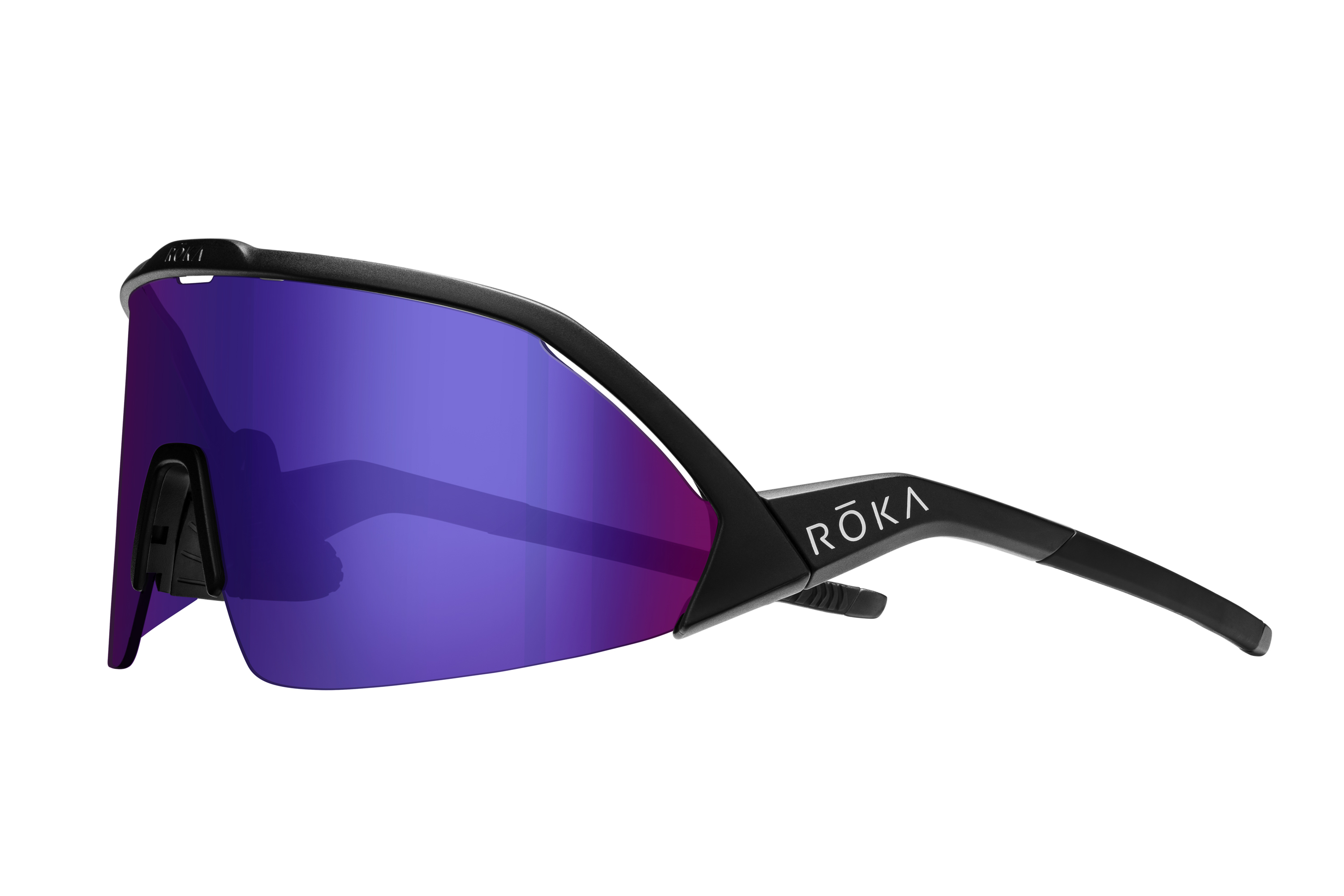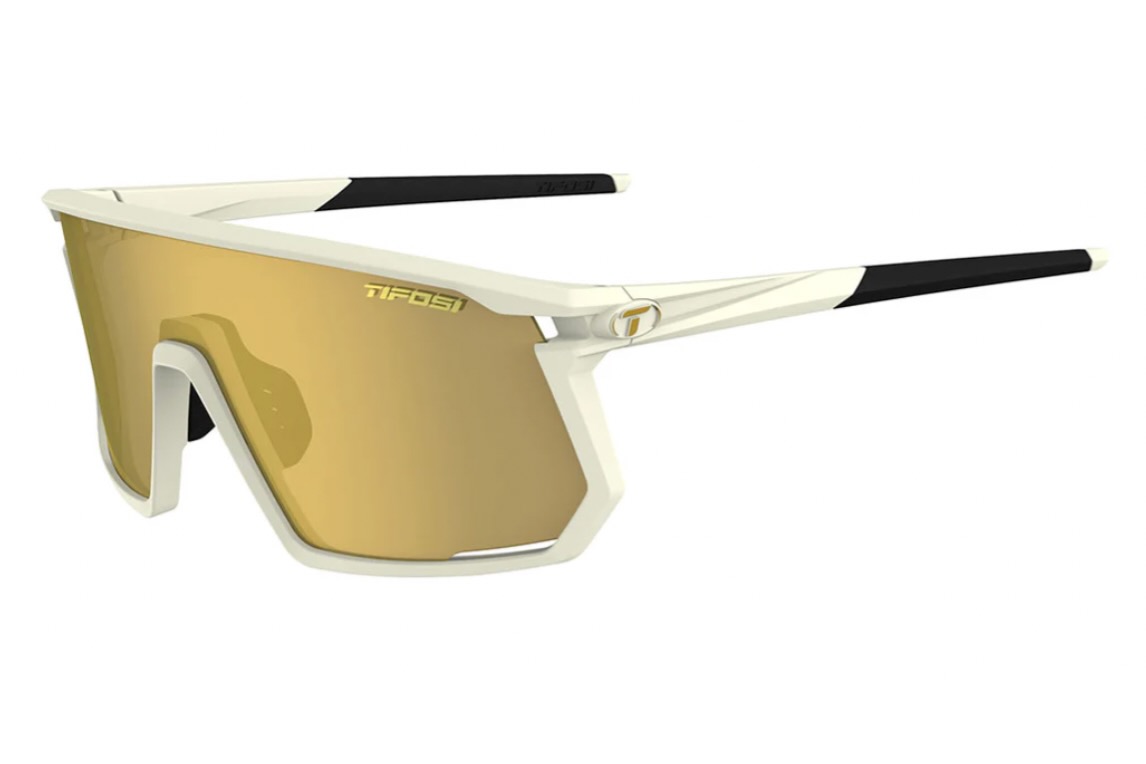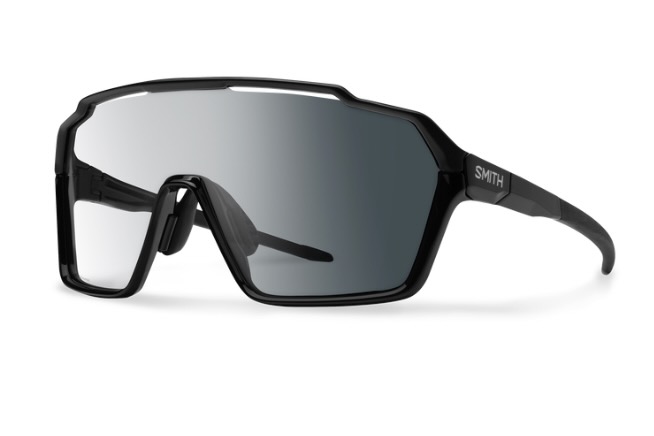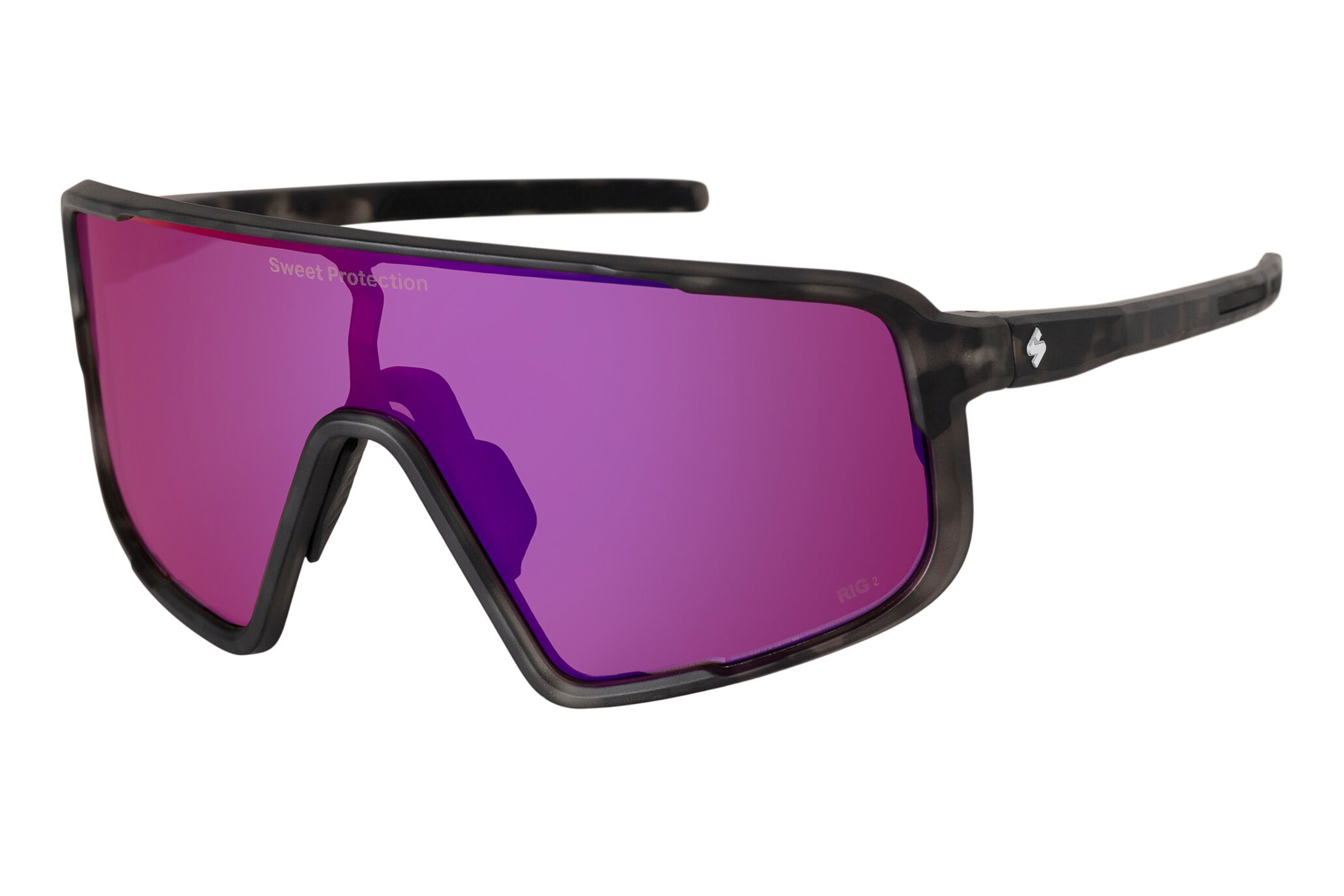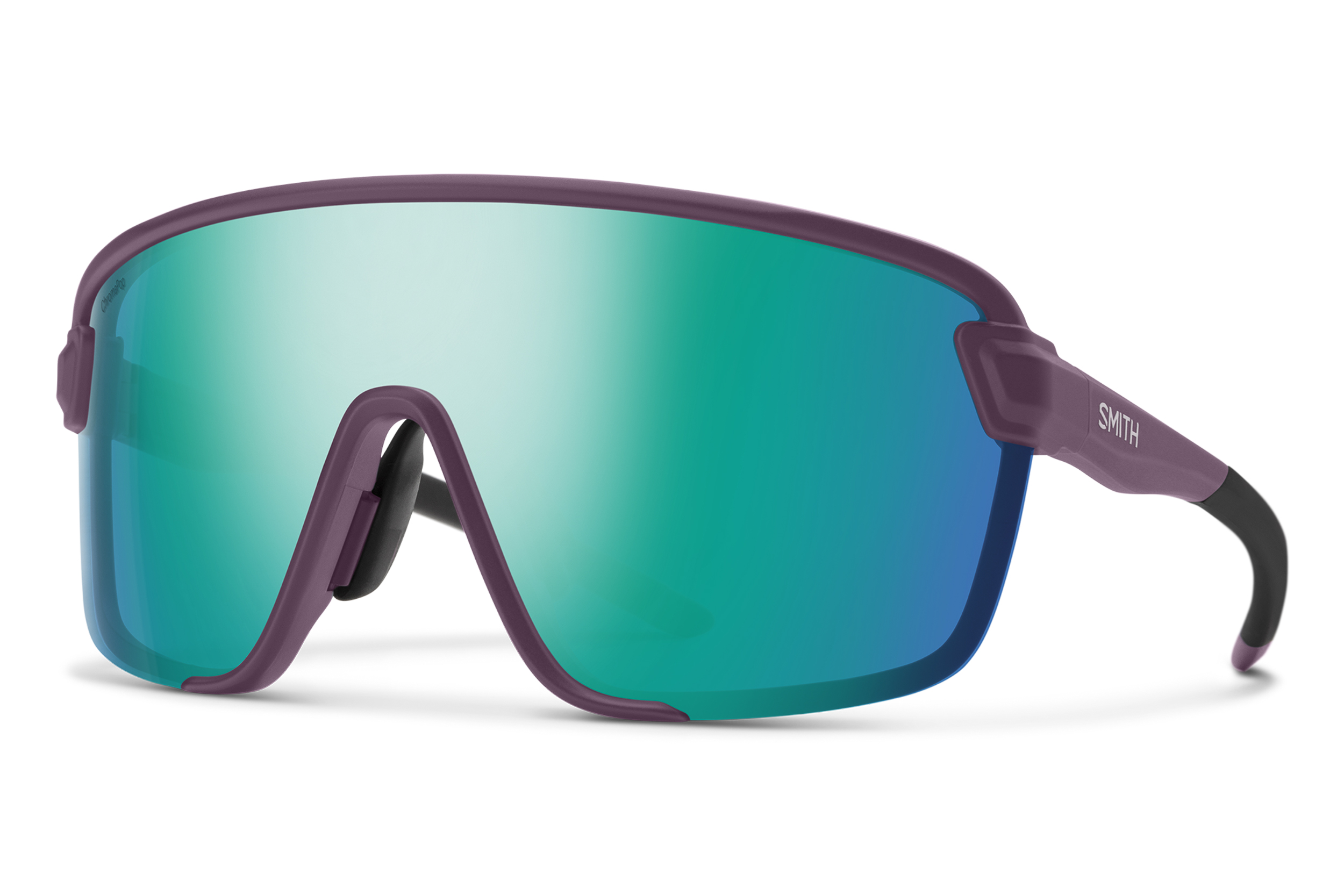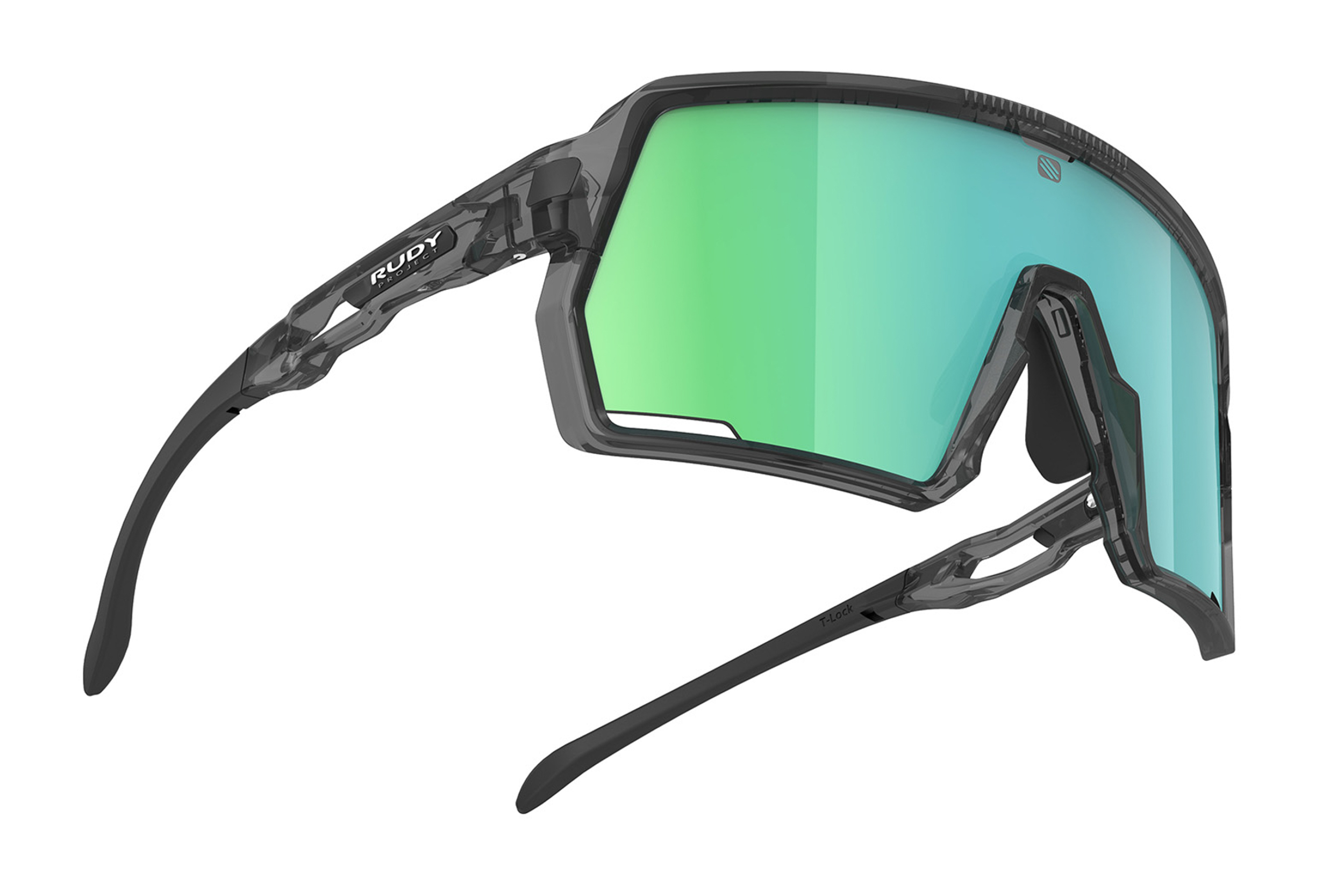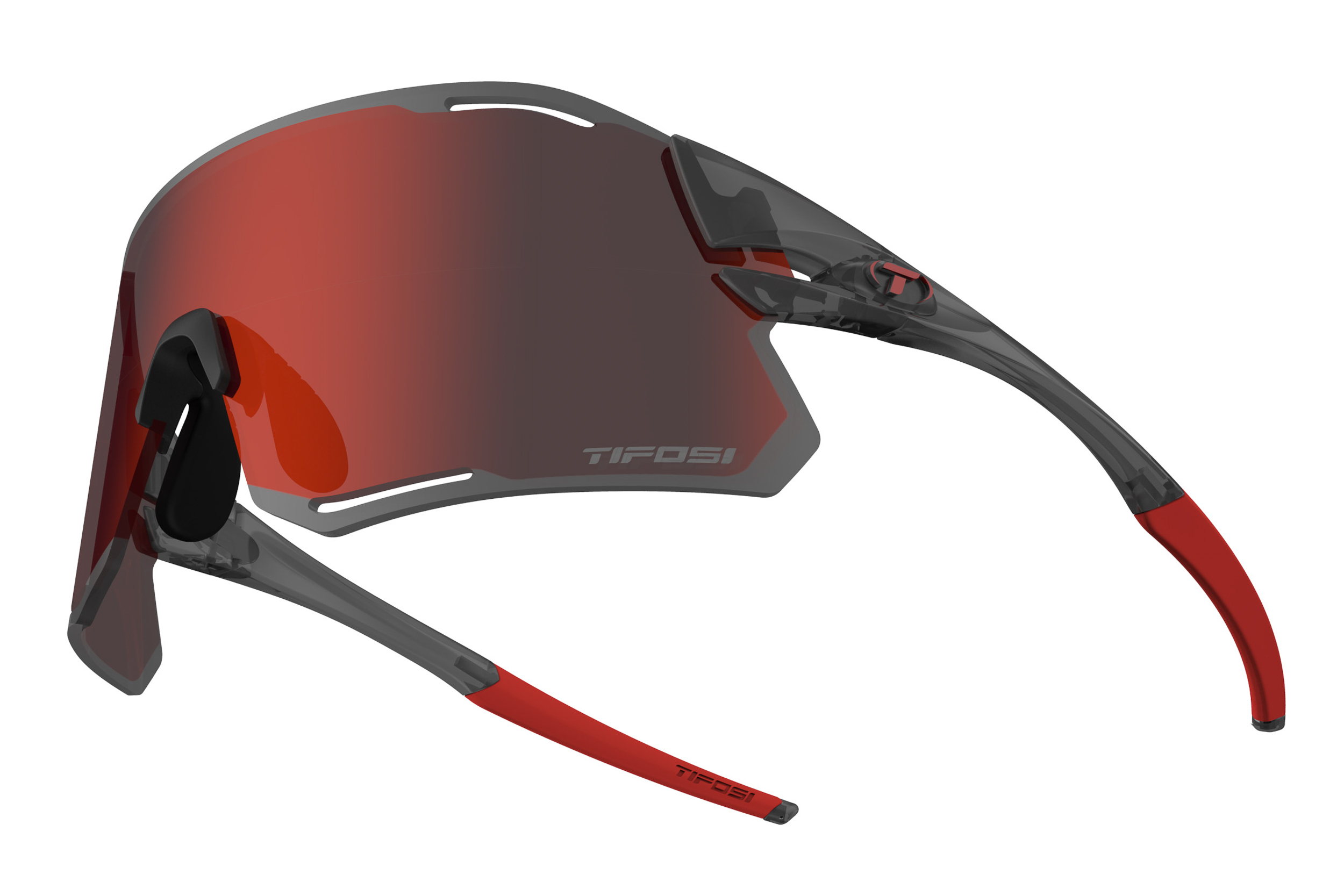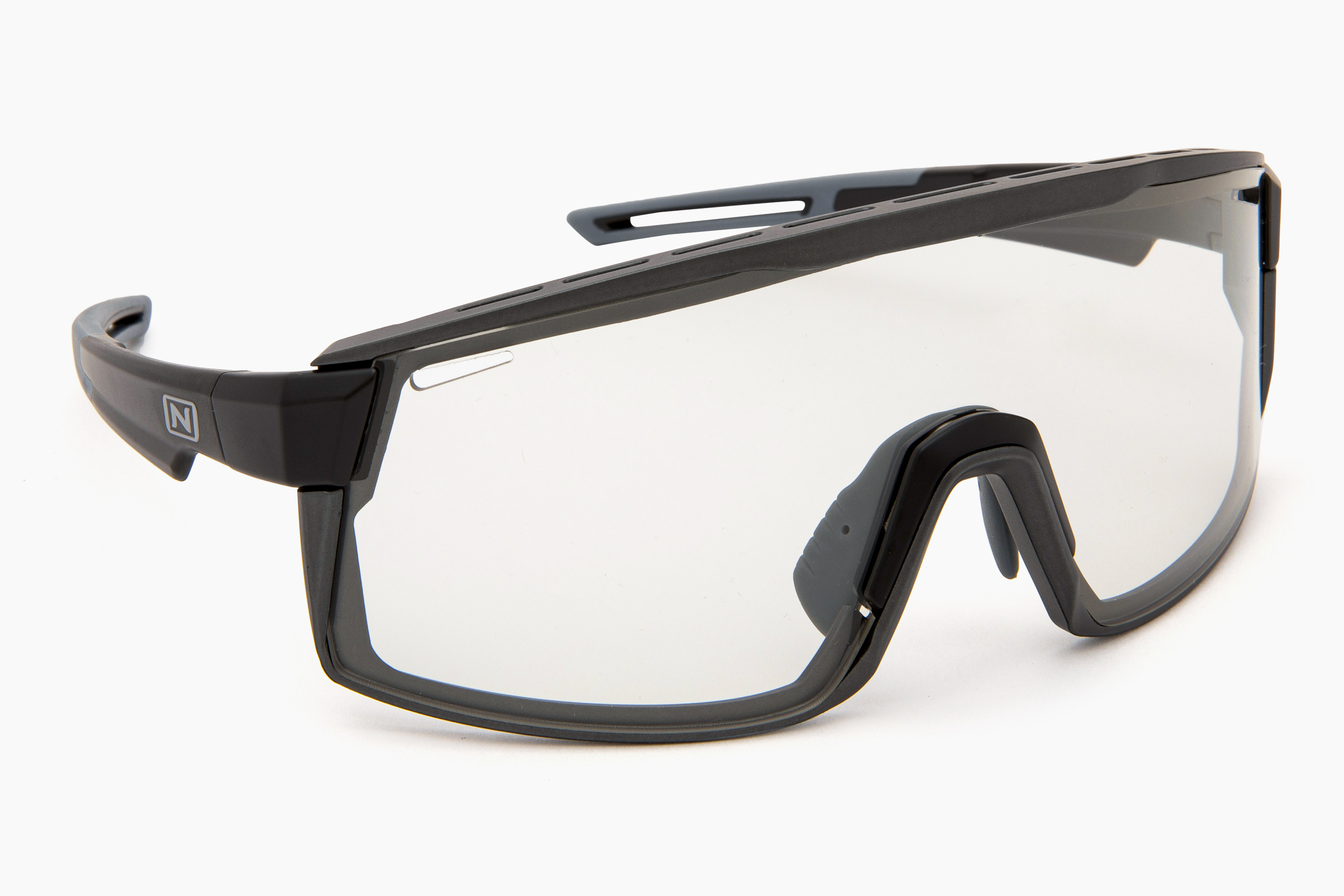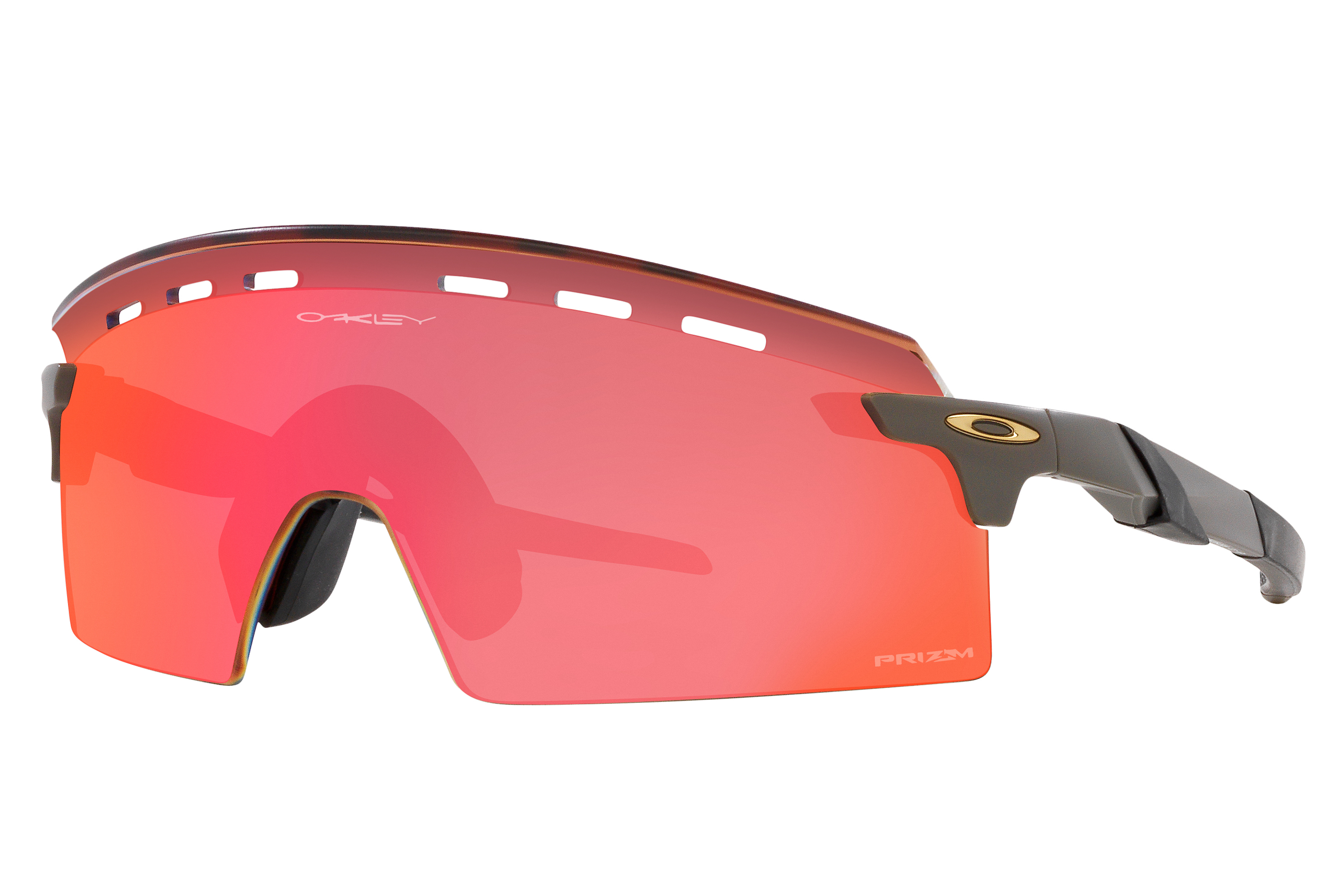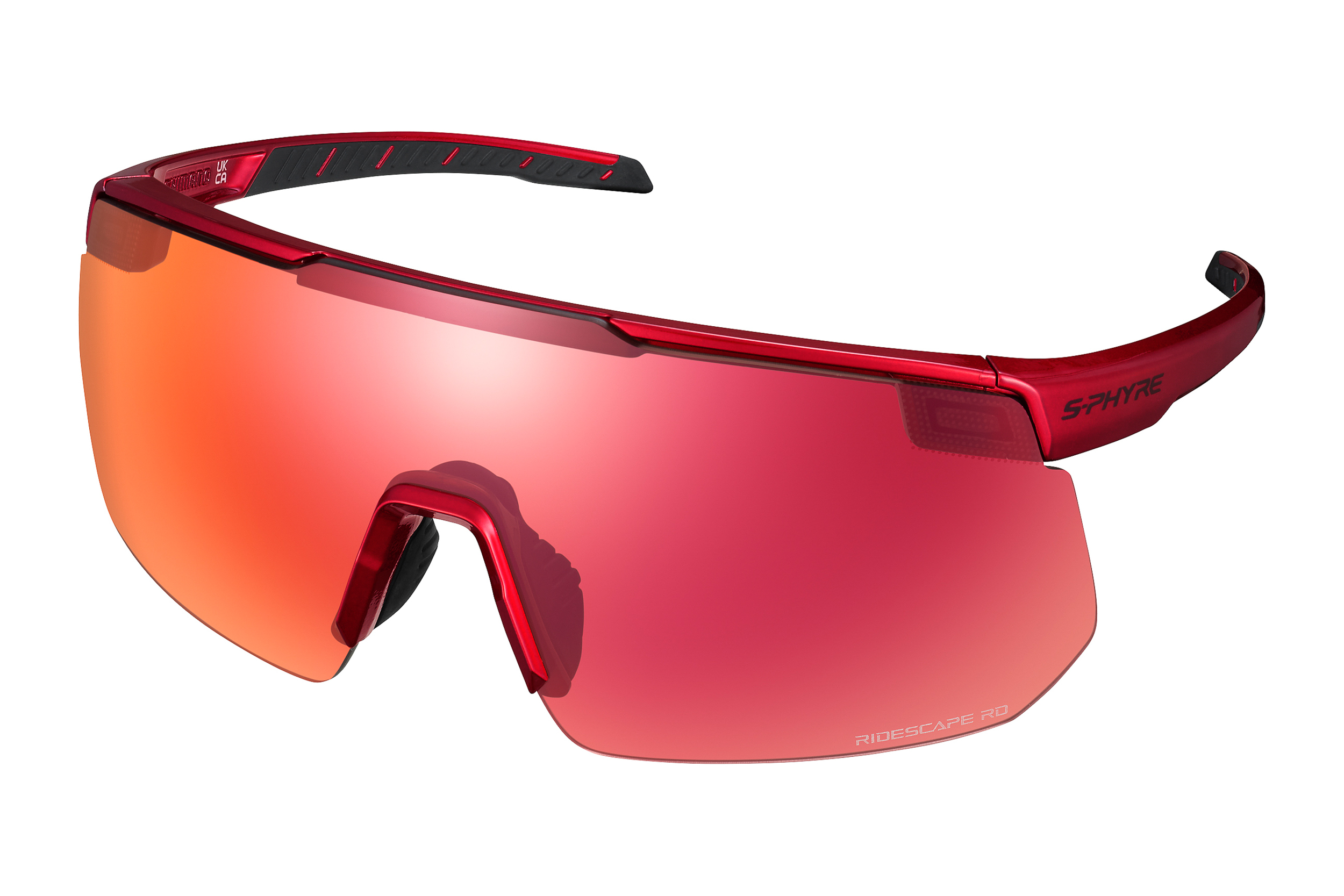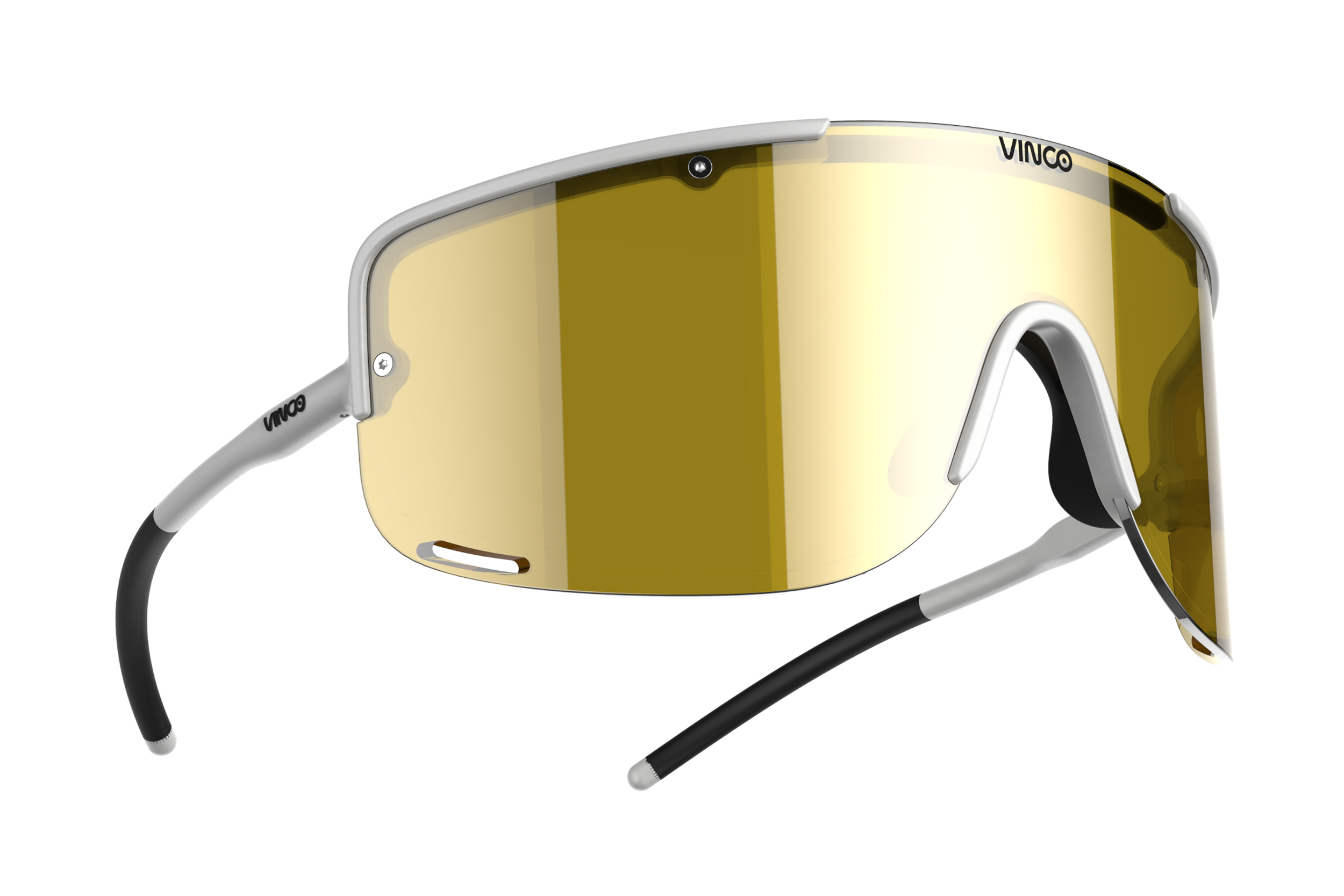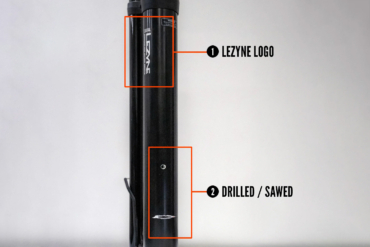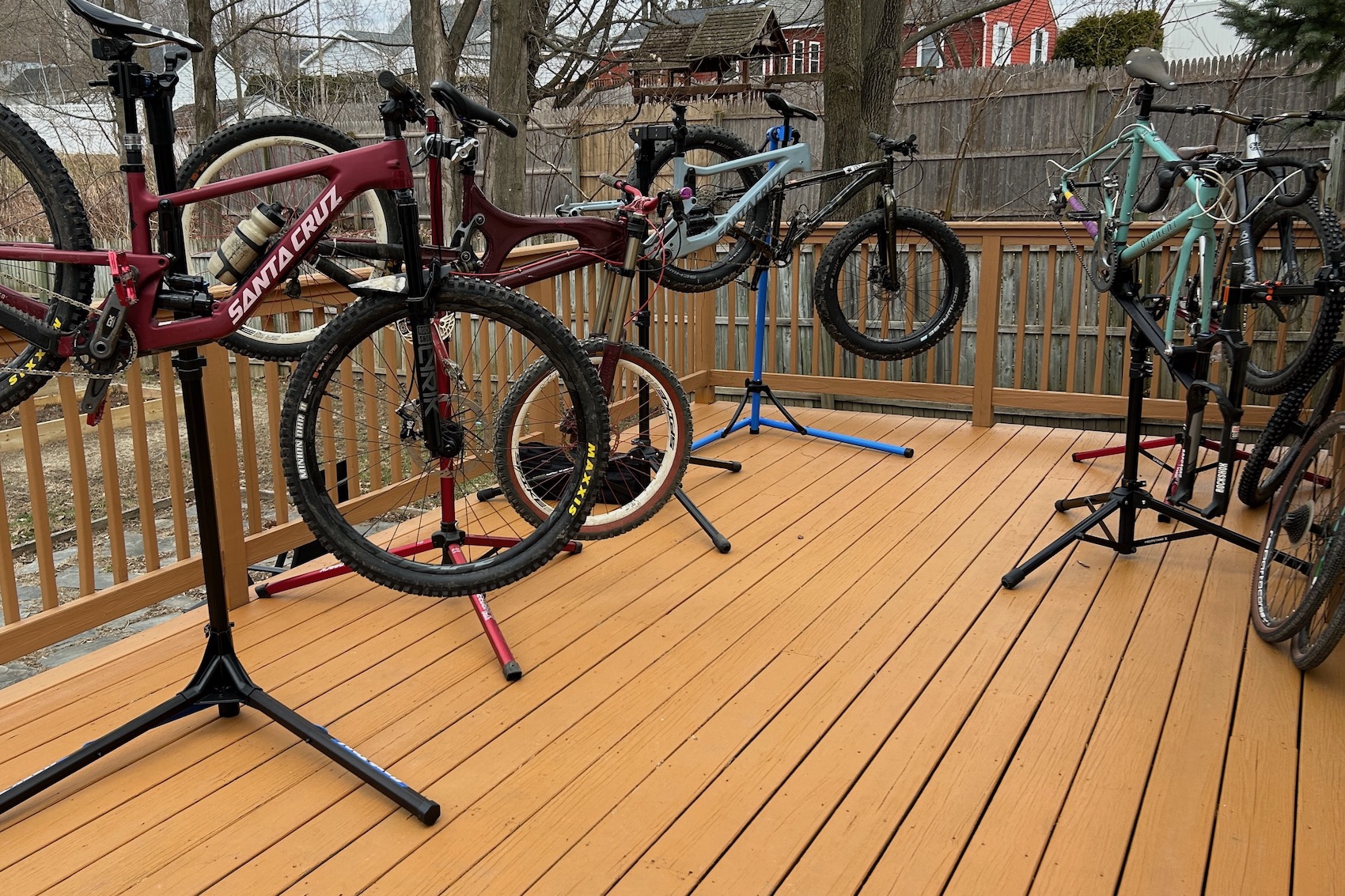Cycling sunglasses lessen glare and visual strain in direct sunshine. But perhaps more importantly, they guard your precious eyes against wind, flying debris, errant branches, or pesky bugs.
From fast group road rides and long journeys on gravel to mountain biking on singletrack and bike park terrain, we never ride without eye protection. Cycling sunglasses shield our eyes from the elements during winter sufferfests in frigid temperatures. They also do their job in the sweltering heat and oppressive humidity of summers in the South.
Our cycling editor, Seiji Ishii, was our head tester, and he’s been sampling cycling glasses for nearly 40 years. From the original Oakley Factory Pilot Eyeshades in 1984 to the plentiful crop of today’s cycling-specific sunglasses, Ishii has tested countless shades to find the best.
Read on for our recommended cycling sunglasses from the seemingly endless and ever-growing list of viable candidates. For a full rundown on what to look for in a pair of cycling sunglasses, head down to our Buyer’s Guide and Price & Value section, or take a look at our Comparison Chart to see these sunnies’ specs and pricing side-by-side.
Editor’s Note: We updated this guide on November 19, 2024, with the addition of the affordable Tifosi Moab, the Smith Shift XL MAG, and a Price & Value summary to explain what you get at different price points.
The Best Cycling Sunglasses of 2025
RŌKA Matador Air
- Verified weight: 28 g
- Frame material: TR-90 nylon
- Lens material: Nylon
Pros
- Very good wind protection for lens size
- Very light feel on the face
- Excellent, crisp optics
- 2-year warranty
Cons
- Frame feels a bit more flexible than some
Tifosi Moab
- Verified weight: 31 g
- Frame material: Grilamid TR-90
- Lens material: Shatterproof polycarbonate
Pros
- Reasonably priced
- Comes with 3 lenses plus zippered case
- Photochromic lens option available
- Great coverage
- Stylish
Cons
- Optics are really good, but a touch below the premium options
- High temples may conflict with some extended coverage mtb helmets
Smith Shift XL MAG
- Verified weight: 26 g
- Frame material: TR-90 nylon
- Lens material: Polycarbonate
Pros
- Chromapop Photochromic lens is the best we've tried
- Tint adjusting lens means you're ready for any condition
- Great coverage
- Light weight
- Several other lens options offered
Cons
- Expensive
KOO Demos
- Verified weight: 32 g
- Frame material: Grilamid polyamide
- Lens material: Zeiss polycarbonate
Pros
- Sturdy frame
- Tight and secure fit
- Many frame colors and lens options available
Cons
- Might be too tight for larger heads
Sweet Protection Memento RIG Reflect
- Verified weight: 30 g
- Frame material: TR-90 polyamid
- Lens material: Unknown
Pros
- RIB Bixbite lens has excellent contrast
- Comes with three different nosepieces for better fit
- Deep and wide lens coverage without looking ridiculous
- Rigid frame produces a stable fit
- Good value
Cons
- Venting might not be adequate in extreme conditions
Smith Bobcat
- Verified weight: 28 g
- Frame material: Evolve bio-based
- Lens material: Polycarbonate
Pros
- Super-light feel on the face
- Fits smaller faces well but still provides ample coverage
- Wide field of view for size
Cons
- May not vent well enough in extreme conditions
- Lens felt thin compared to others
Rudy Project Kelion
- Verified weight: 36 g
- Frame material: Rislan Clear bioplastic
- Lens material: polycarbonate, optical polyurethane for photochromic
Pros
- Unique button-activated split frame makes lens swaps easy
- Wide fit with adjustable ear stems and nose piece makes for a great fit on larger heads
- Integrated Rx lens insert available
Cons
- Might be too wide for smaller faces
- Frame might not be rigid enough for some
Other Cycling Sunglasses We Tested
- Verified weight: 32 g
- Frame material: Grilamid TR-90 polyamide
- Lens material: Polycarbonate
Pros
- The best value in cycling sunglasses
- Adjustable nose piece and temples for customization
- Good wind protection for lens size
Cons
- Flexible compared to others
- Verified weight: 38 grams
- Frame material: G85 nylon plastic
- Lens material: Polycarbonate
Pros
- Lifetime warranty
- Good value
- Excellent lens optics
- Tight temples for a very secure feel
Cons
- Might be too tight for larger heads
- May not be enough venting in extreme conditions
- Verified weight: 34 g
- Frame material: O Matter nylon
- Lens material: Plutonite polycarbonate
Pros
- Excellent tint and optical clarity for challenging trail light conditions
- Excellent rigidity for style of frame
- Hydrophilic rubber on nose piece and ear stems had excellent adherence under heavy sweating
- Great venting
Cons
- Some may prefer deeper lens coverage for more protection
- Most expensive cycling sunglass in this guide
- Verified weight: 30 g
- Frame material: Grilamid TR90 polyamide
- Lens material: Grilamid TR polyamide
Pros
- Magnets make for quick lens changes (2 are included)
- Excellent visual contrast in the Ridescape Road lens
Cons
- Lens can pop off when opening or closing the frame
- Verified weight: 30 g, size Large
- Frame material: Lignatura bio-resin
- Lens material: Polyamide
Pros
- Expansive lens coverage area and field of view
- 2 sizes available
- Stainless steel lens mounting hardware
- Adjustable temples and spring loaded hinges
- 2-year warranty and refurbishing service available
Cons
- Might not vent well enough in extreme conditions
- Feels heavier on the face than others
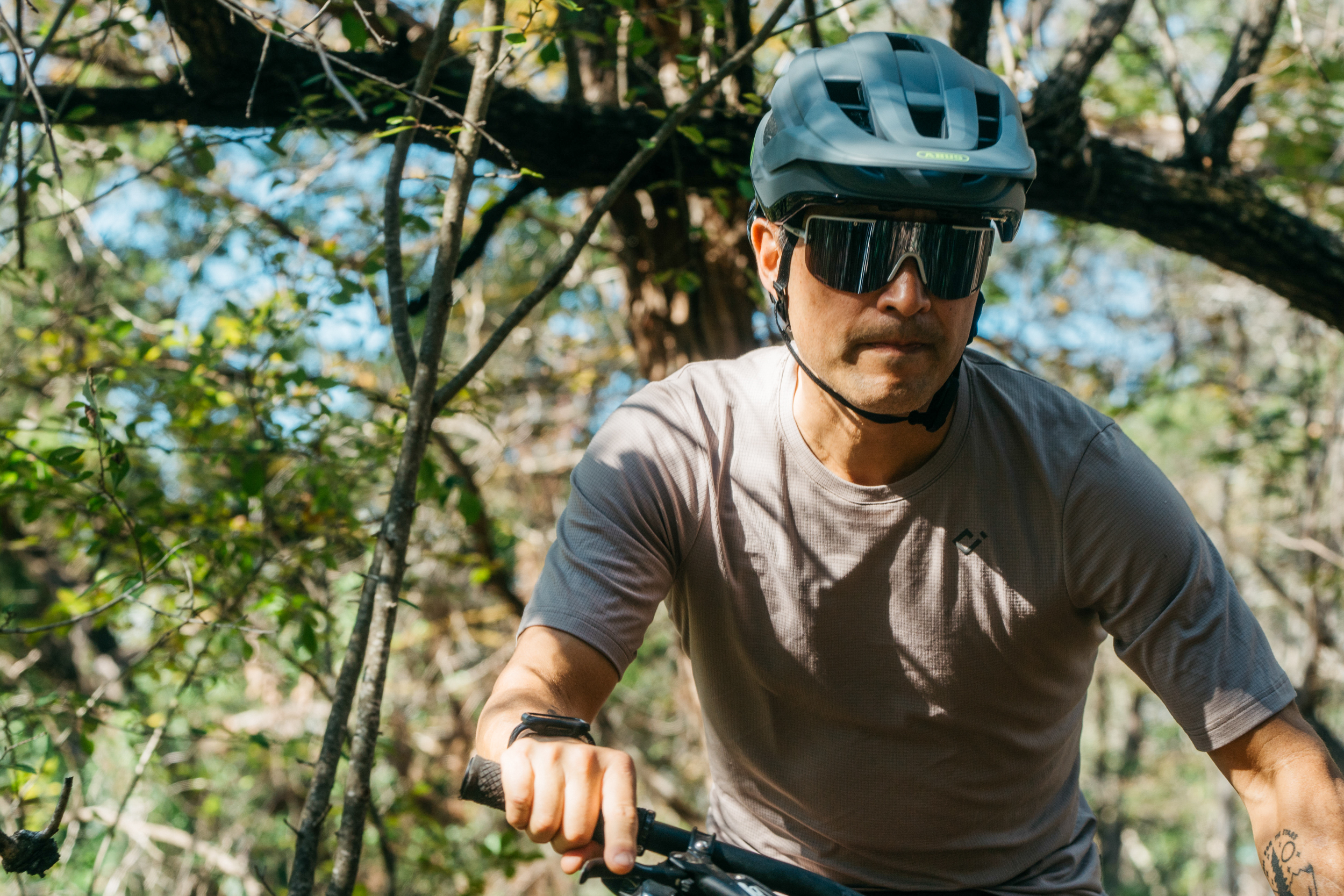
Cycling Sunglasses Comparison Chart
| Sunglasses | Price | Weight | Frame Material | Lens Material |
|---|---|---|---|---|
| RŌKA Matador Air | $230-250 | 28 g | TR-90 nylon | Nylon |
| Tifosi Moab | $80 | 31 g | Grilamid TR-90 | Shatterproof polycarbonate |
| Smith Shift XL MAG | $285 – 305 | 26 g | TR-90 nylon | Polycarbonate |
| KOO Demos | $170-200 | 32 g | Grilamid polyamide | Zeiss polycarbonate |
| Sweet Protection Memento RIG Reflect | $130 | 30 g | TR-90 polyamide | Unknown |
| Smith Bobcat | $215-255 | 28 g | Evolve bio-based | Polycarbonate |
| Tifosi Rail Race | $80 | 32 g | Grilamid TR-90 polyamide | Polycarbonate |
| Optic Nerve FixieMAX Photochromic | $149 | 38 g | G85 nylon plastic | Polycarbonate |
| Rudy Project Kelion | $240 | 36 g | Rislan Clear bioplastic | Polycarbonate, optical polyurethane for photochromic |
| Oakley Encoder Strike with Prizm Trail Torch Lens | $276 | 34 g | O Matter nylon | Plutonite polycarbonate |
| Shimano S-PHYRE Magnetic | $220 | 30 g | Grilamid TR90 polyamide | Grilamid TR polyamide |
| Vinco Sola | $249 | 30 g | Lignatura bio-resin | Polyamide |
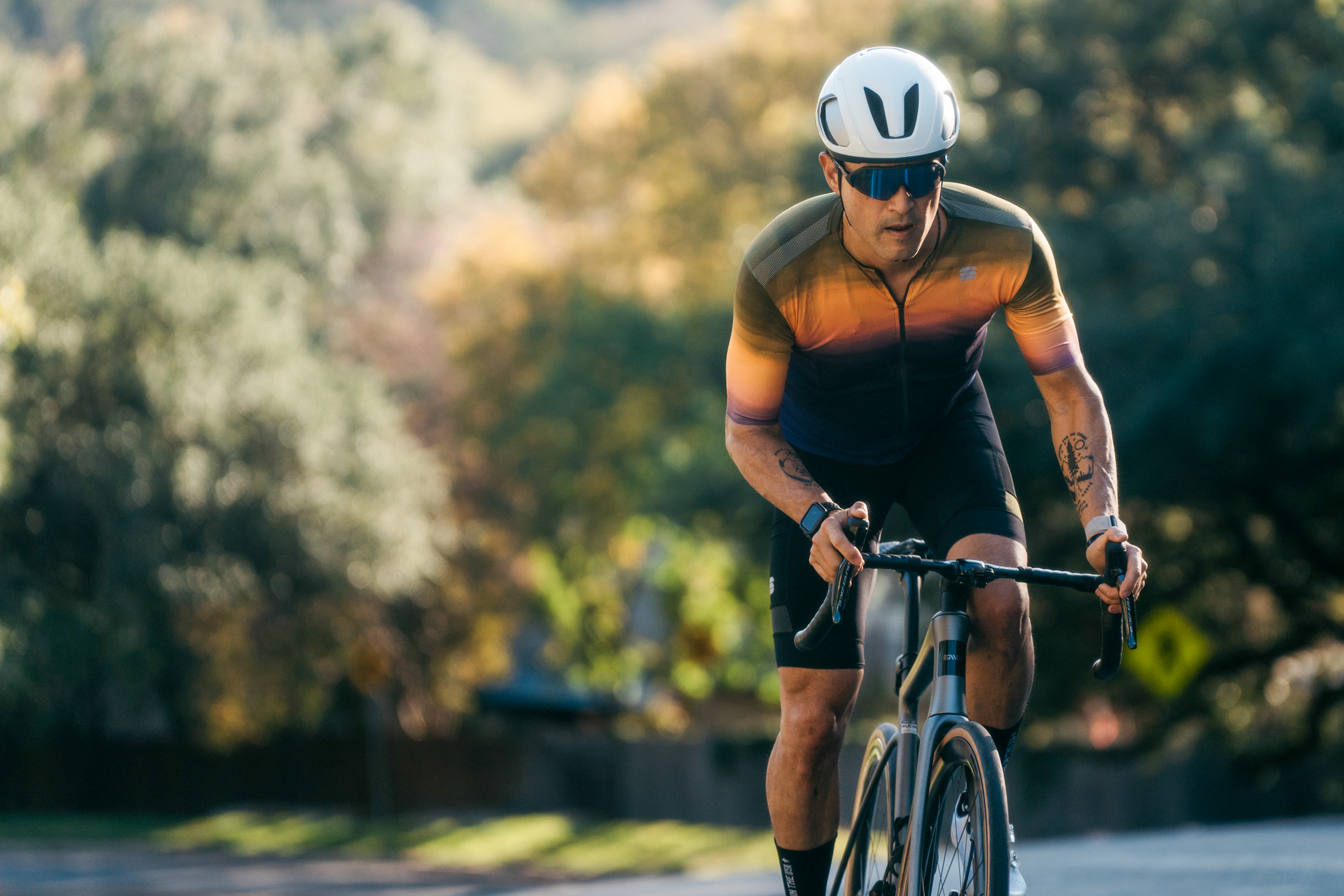
Why You Should Trust Us
Our cycling editor and head tester for this guide, Seiji Ishii, has been turning the pedals for 40 years. In that time, he has gone from wearing wireframe aviators to the best cycling sunglasses the industry has churned out. From the infamous Oakley Eyeshades to the current crop of highly technical cycling-specific eyewear, Ishii has spent countless hours and thousands of miles behind the lenses.
Ishii takes eye health and safety very seriously. Although not through cycling, he lost a portion of his vision in his left eye for 6 months. So, he understands how debilitating it is to lose even a small portion of vision. He also has a fat and protein deposit on one eye from cycling in the Texas sun as a teen without sunglasses. Ishii understandably doesn’t turn a single pedal stroke without cycling sunglasses protecting his eyes.
If Ishii needs help testing the numerous cycling sunglasses on his plate, he elicits the services of lifelong cyclists he’s known and trusted for decades. He is also friends with current and ex-World Tour team members and staffers and often asks them for equipment opinions and advice.
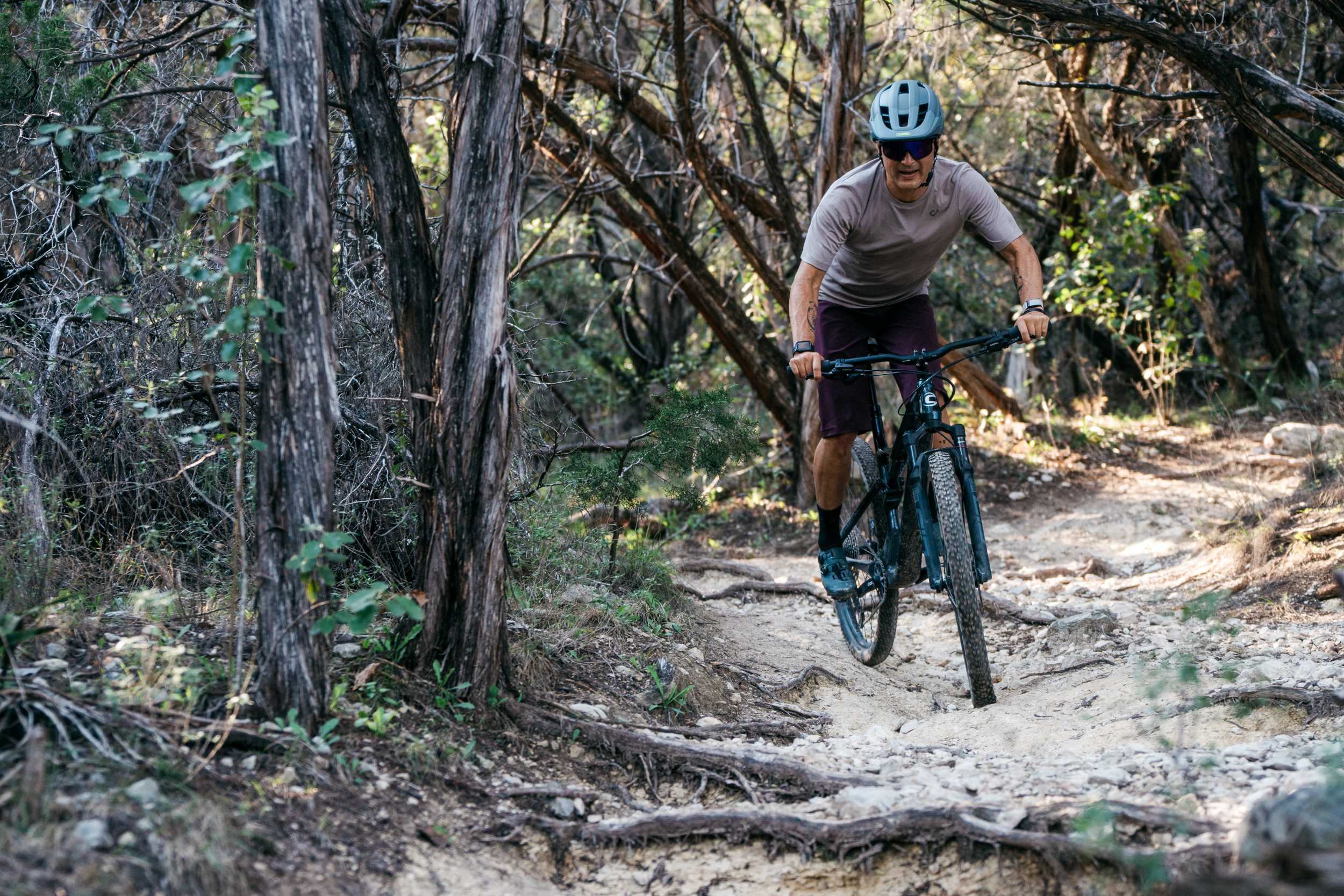
How We Tested Cycling Sunglasses
Our team, led by cycling editor Seiji Ishii, logged thousands of miles while continuously testing every cycling sunglass they could obtain. Roads, gravel, trails, and bike parks were all testing grounds over the years. Some models excelled at certain venues, and a few performed well in all.
We compiled notes and mentally logged impressions on every aspect of the glasses listed in this guide. Protecting the eyes was at the top of the list of desired attributes. This meant shielding them from flying debris, branches, dust, and wind.
Comfort was a high priority, especially over long distances and hours. Security went hand in hand with comfort, as glasses that don’t stay put cannot offer consistent protection. This was especially true in the hot summer months while mountain biking. Sweat and jarring motions made the cycling sunglasses’ job of staying in the correct position much harder. Finally, the glasses had to be compatible with helmet straps.
Most brands offer cycling sunglasses with a variety of lens tints. The best tint depends on a myriad of conditions. These range from weather, tree cover, time of day, type of terrain, speed of riding, and others. And much of it is a personal preference. Some glasses come with a tinted lens and a clear one. And finally, we tested a few photochromic lenses. We noted how lenses affected contrast, clarity, and color correctness when something stood out.
While the sunglasses in this guide could be plenty useful off the saddle, check out our guide to the Best Sunglasses for the Outdoors if you’re looking for shades for more general use, or refer to our guides for running, fishing, and driving if you’re looking for something more specific.
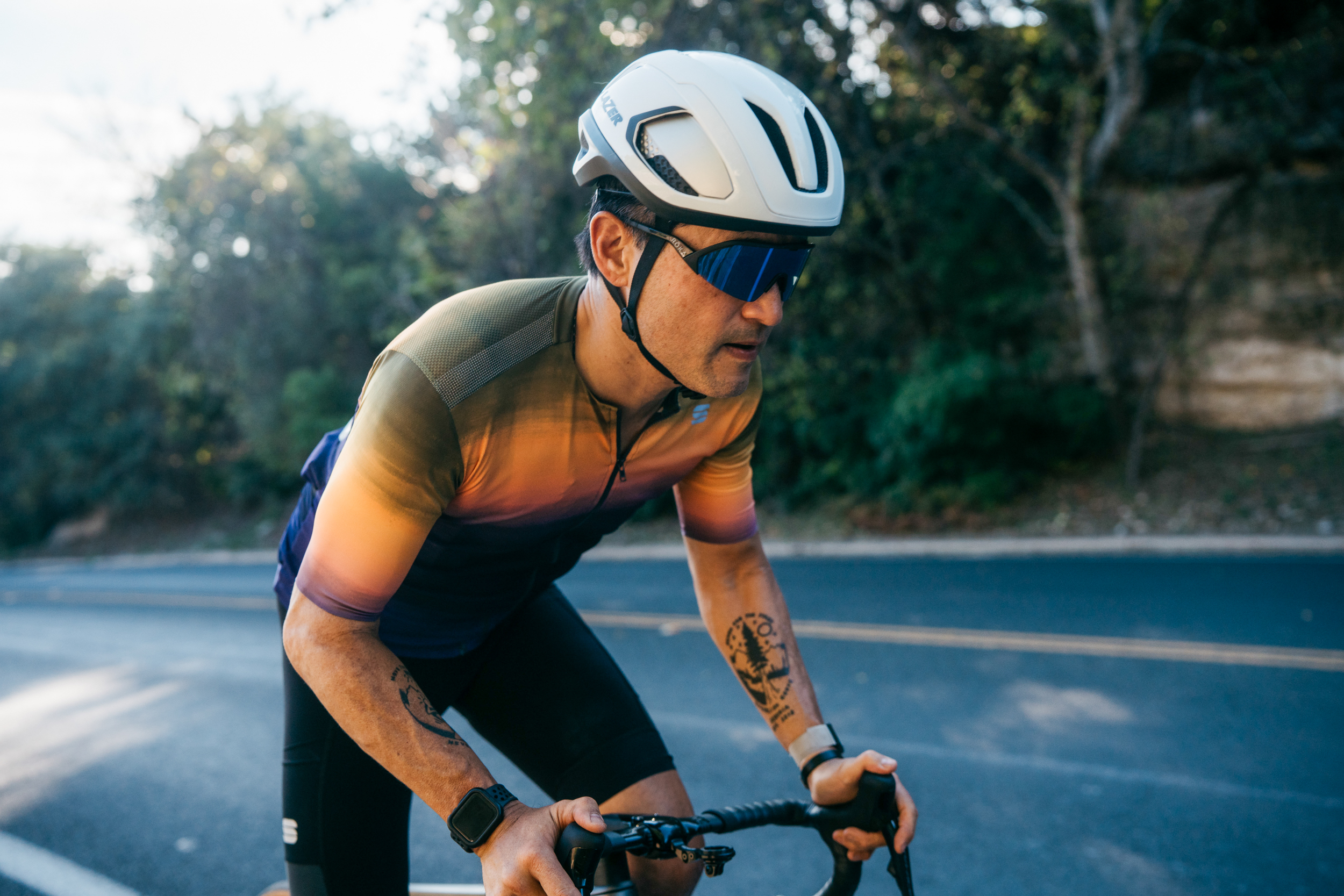
Buyer’s Guide: How to Choose Cycling Sunglasses
A legitimate question is, “Do I need sunglasses that are specific to cycling?” Yes, you do. Safety is the primary concern as you hurtle your eyeballs at speed through the air. Some things are annoying, like dust. But other things are potentially catastrophic, like stones thrown up by cars or bicycle tires. But there are other reasons to ride in cycling-specific sunglasses.
Why You Need Cycling Sunglasses
Other outdoor-oriented sunglasses can block out harmful UV rays and a specific amount of light. But cycling sunglasses offer much better protection from wind and flying debris. The lenses are shatterproof, usually with more coverage area than other glasses. This helps them keep the riding-induced wind from drying eyes and contact lenses.
Cycling sunglasses must also be supremely comfortable, as cyclists routinely ride for several hours in demanding conditions. It’s one thing to drive in an air-conditioned car for three hours. But quite another to toil away under a hot sun or relentless winds for the same duration. In addition to comfort, they must also be stable in these conditions. Brands work hard on materials that remain tacky on the skin during heavy sweating while providing the right feel to avoid irritation during long, bumpy stints in the saddle.
Cycling sunglass brands must also design glasses for the head down, eyes up point of view in some riding positions. The sunglass temples must also the straps on both road bike and mountain bike helmets.
And finally, especially on the road cycling side, riders can be very fashion-conscious. Combining good looks with the other required elements that make sunglasses functional in cycling can be tricky and difficult.
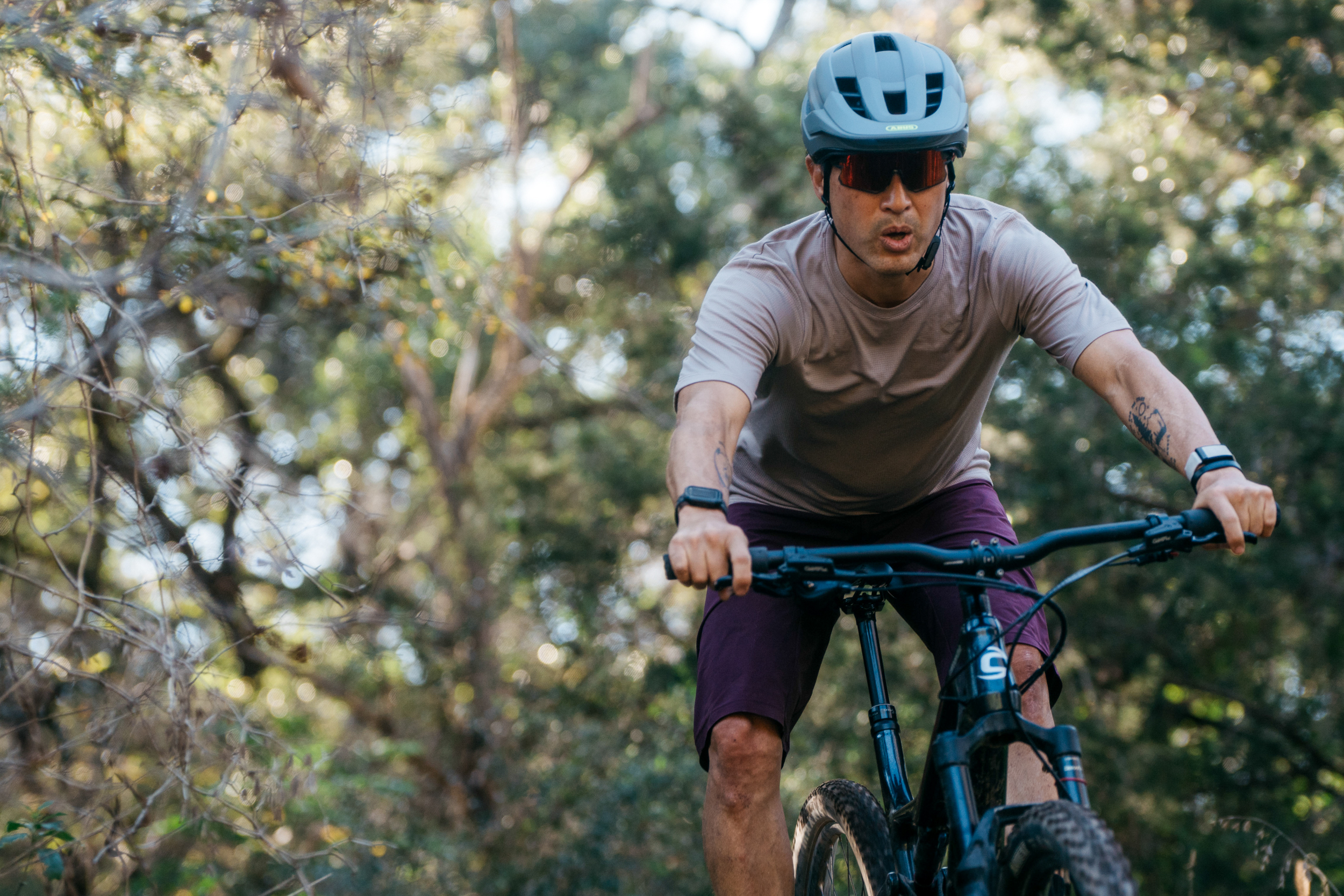
Best Cycling Sunglass Brands
Of all the sunglass brands active in cycling, Oakley holds the top spot in terms of recognition and, many will argue, function. It was the first to offer a cycling-specific sunglass with the Oakley Factory Pilot Eyeshade. The sunglasses were huge for the time, with adjustable earstems, a sticky rubber nosepiece, and a sweat brow pad. They debuted at the 1984 Los Angeles Olympic Games. Then, in 1986, Greg LeMond won the Tour de France in the Eyeshade and vaulted the brand into widespread acceptance in cycling.
Oakley has remained at the forefront of cycling, its models evolving with cycling’s ever-advancing speeds, lower weights, and fashion. Oakley sponsors many of the highest-ranking and highest-profile cycling teams and athletes. This keeps the brand and cycling sunglasses models on constant display for discerning cyclists.
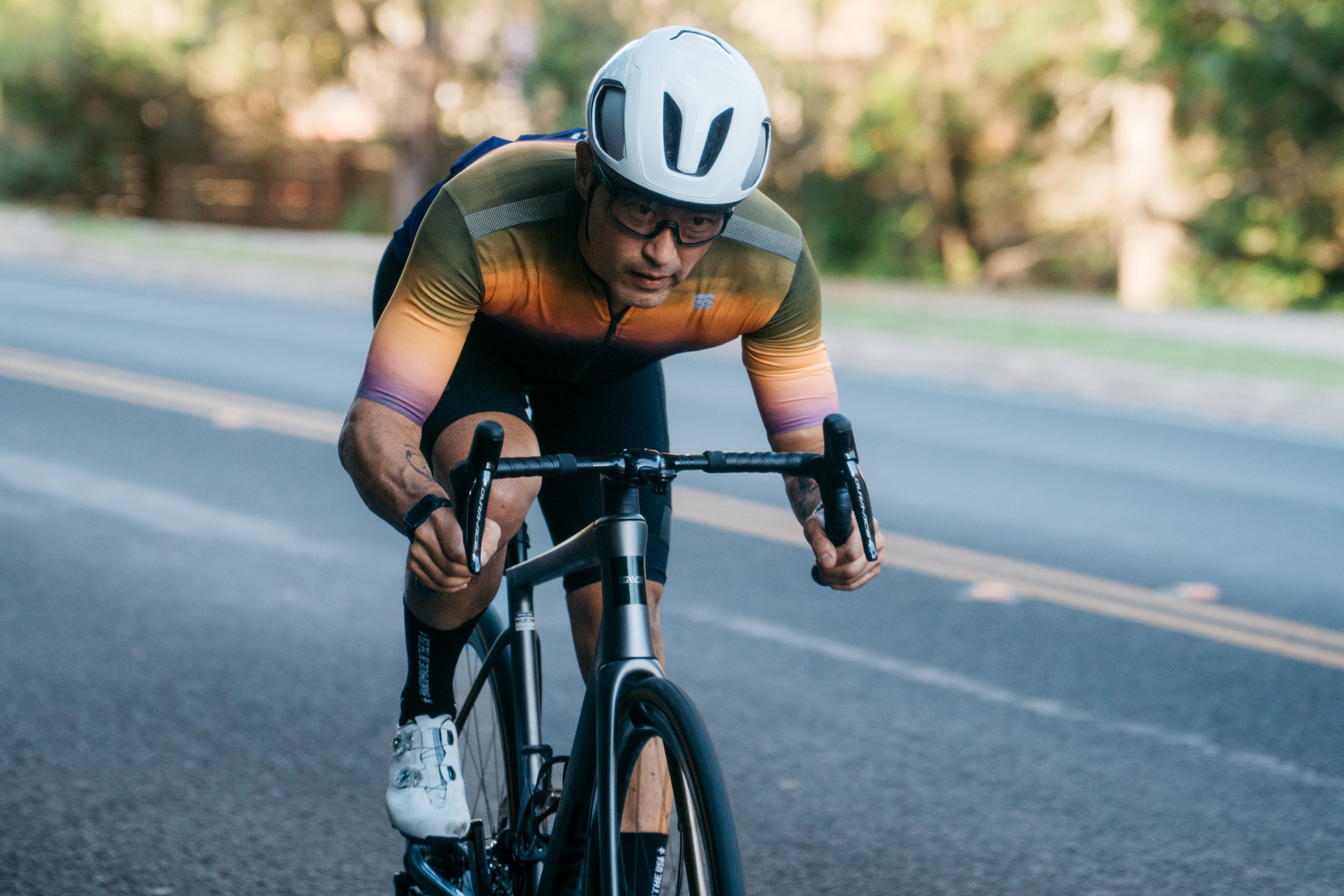
Ishii has been riding and racing in Oakleys for decades, and it’s hard for him to find faults with most of the models he’s worn for thousands of hours. But other brands inserted themselves in cycling as it exploded during the LeMond and Lance Armstrong eras of road racing. The consistent growth of mountain biking buoys the brands. And most recently, the quickly growing popularity of gravel biking has expanded the market.
Cycling brands that produce anything from garments and helmets to hard components have thrown their hand into the highly competitive market. And it seems every year, more brands join the cycling sunglasses fray. Brands also step in sideways from other sports like skiing or motorsports. They likely see the popularity of cycling expanding and don’t want to miss the boat. Shimano, Sweet Protection, and KOO (a subsidiary of Kask) are examples of ancillary brands joining the cycling sunglasses market.
Lenses
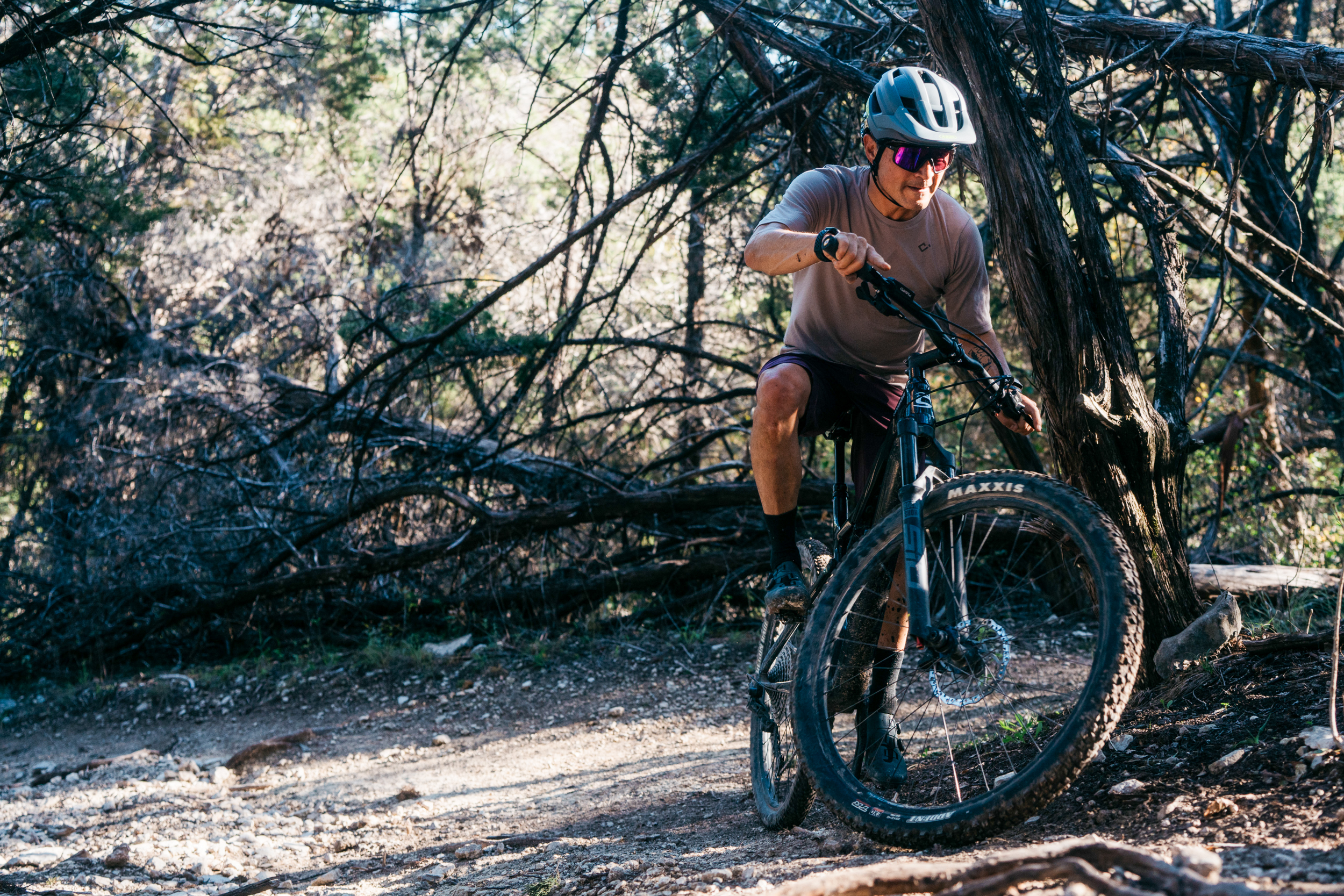
The most important part of any cycling sunglasses is the lens. This is what stops the potentially injurious object from reaching the eyes. Lenses must be shatterproof, and brands use polycarbonate, nylon, or a form of polyamide. The lenses must resist penetration by hard objects at high speed. They must also be reasonable in weight and provide enough optical clarity for high-speed pursuits.
Some brands certify their lenses as Optical Class 1, which is “for work with particularly high vision requirements for permanent use.” Ishii feels any reputable cycling sunglass brand adheres to this as a minimum level of performance.
Mineral glass may be used in other outdoor sunglasses and often provides superior optics. But they don’t have a place in cycling as they are not shatterproof and are much heavier than polycarbonate, nylon, or polyamides.
Next, the lens must shield the eyes from harmful UV radiation and filter out enough light to be able to perform well in specific conditions and to reduce eye strain over long hours. According to the National Eye Institute, we should all look for “lenses that provide 99 to 100 percent protection from UVA and UVB or marked as having a UV400 rating.”
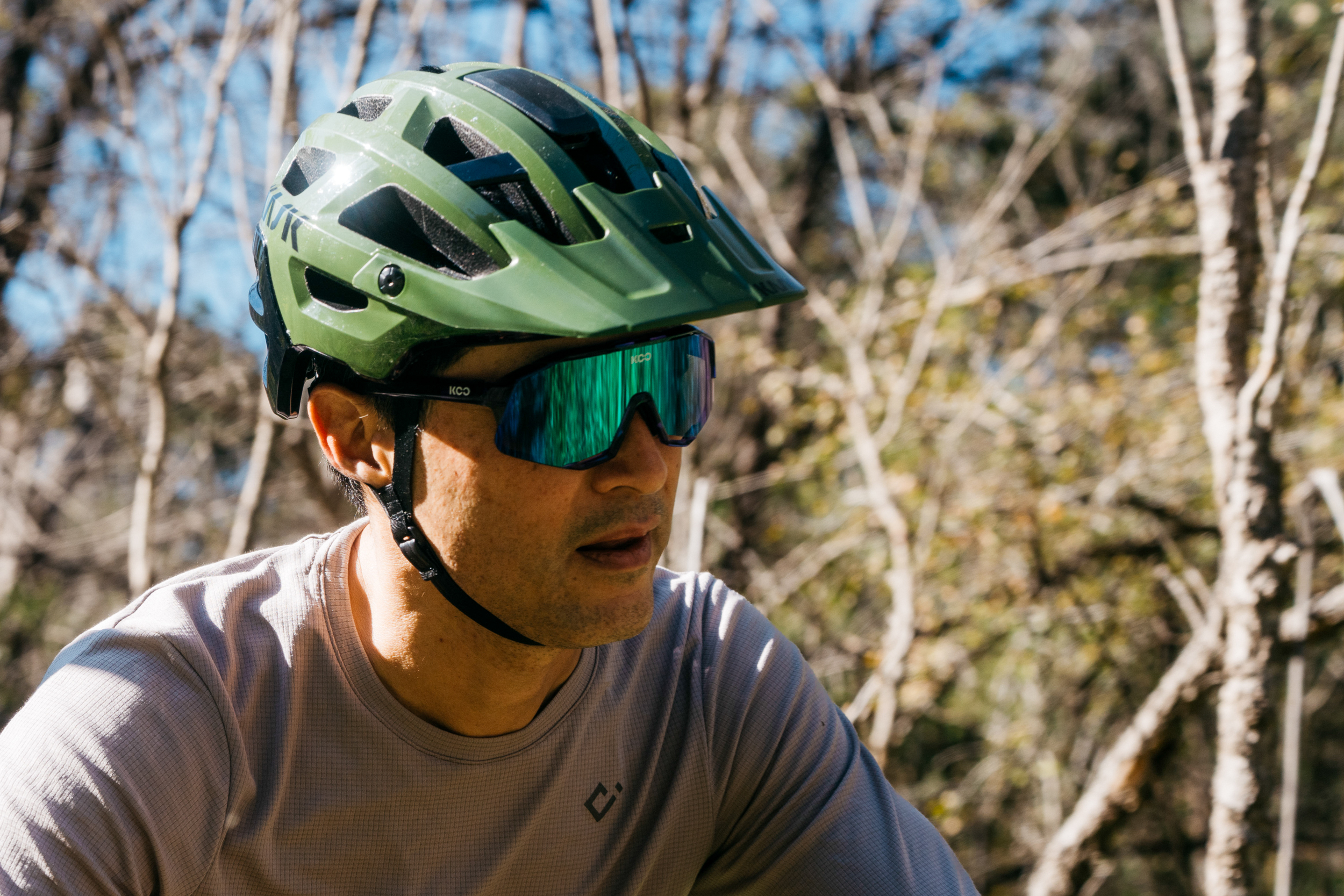
Choosing a lens that is appropriate for the light conditions is also very important. If you’re riding in full sun on the road or on the desert, you’ll likely want to choose a darker tint with a lower visible light transmission (VLT). If you’re riding under a heavy forest canopy, then perhaps a lighter color or tint with a higher VLT will serve you better. Many riders find it beneficial to have multiple pairs of cycling sunglasses or interchangeable lenses for use in varying light conditions.
A quick note on VLT. Most sunglass brands will list the percentage of visible light transmission or VLT with their lenses. This refers to the amount of visible light that passes through the lens to the eye. So, the lower the VLT percentage, the darker the lens, and vice versa. For super bright conditions with glare from the road or snow, we like to use a dark lens with a VLT between around 10 to 15%. For overcast days or riding in deep, dark forests, we prefer lenses with a higher VLT percentage in the neighborhood of 20 to 30% and find that colors like rose, amber, or yellow can be helpful in more challenging light conditions. If it’s really dim, we often opt for lenses that are clear or close to it. Don’t like to change lenses? You can learn about self-adjusting photochromic lenses below.
As a final note on lenses, mirrored finishes are popular among the cycling crowd. They do contribute to the effects of the tint, often improving contrast, but most are more prone to scratching. Non-mirrored lenses will have a much longer scratch-free life. In both cases, one must be careful during cleaning as cycling sunglasses are not nearly as scratch-resistant as mineral glass.
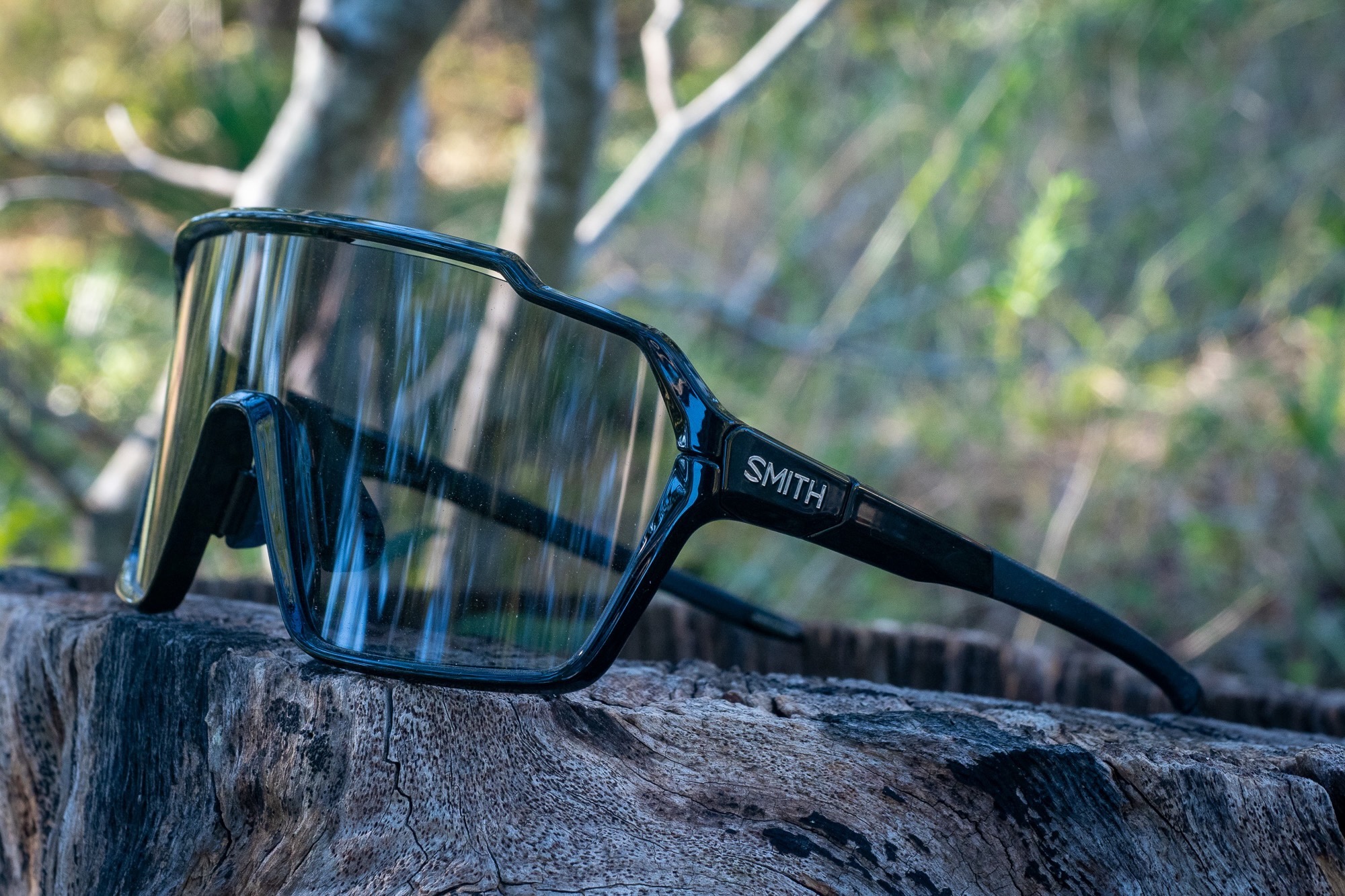
Photochromic Lenses
While the majority of lenses have a fixed tint and percentage of visible light transmission (VLT), photochromic lenses are those that adapt to ambient light conditions. The nice thing about photochromic lenses is that when the light conditions change, your lenses follow suit, so you’ve always got the appropriate tint. This is great if your sunny road ride turns overcast or vice versa or if you misjudged your pace and the timing of sunset.
It is important to note that photochromic lenses do change tint automatically, but it doesn’t happen instantly. Most lenses take about 20 to 30 seconds to adapt to the ambient light. So, if you are moving quickly between bright sunlight and shadow, they will stay the same based roughly on the average brightness outside.
Ishii doesn’t feel that most photochromic lenses change quickly enough for mountain biking in the woods. The instant transition from bright to dark asks too much from the current crop of photochromic lenses. The new Chromapop Photochromic lens from Smith Optics, however, has made him change his tune. He tested it recently with the Smith Shift XL Mag sunglasses and was thoroughly impressed.
It depends on the brand, but most offer photochromic lenses as an option alongside all of the various tints, colors, and reflective coatings they offer. Often, but not always, photochromic lenses cost a bit more than the standard lens options.
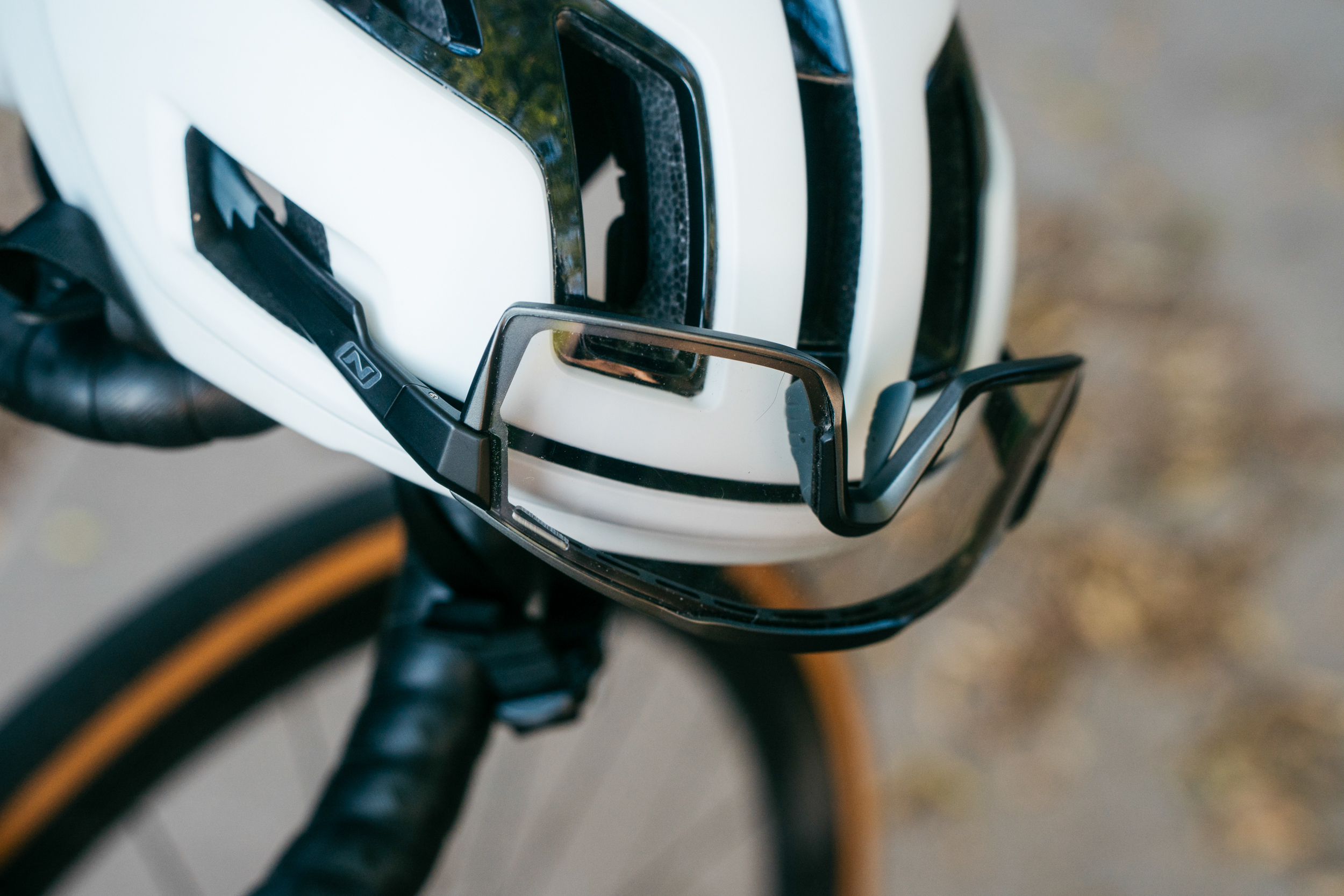
Frames
The frame’s job is to keep the protective lens in the proper place, regardless of what is happening while cycling. This means staying put through the big drops of bike parks to hours of pouring sweat on summer road rides. Frames do this with a combination of frame size and rigidity, temple tension, ear stem adjustability or curvature, nosepiece fit, and tacky and often hydrophilic rubber on the nosepiece and ear stems.
First off, the frame must fit the face. The width is the primary dimension that affects fit. Wide faces must have matching wide frames, or the tension across the temples and ear stems could be uncomfortable. And vice versa: narrow faces require narrow frames, or there will be too little lateral tension. And the frames may not adjust far enough to provide a stable fit.
The width of the nose bridge is also a big consideration. If the nosepiece is too wide, the glasses will slide down. If the lens hits the cheekbones, sweat will accumulate. Also, fogging is more likely if the sunglasses slide down, putting much of the lens in closer proximity to the face. Luckily, many brands include different sizes or adjustable nose pieces.
Adjustable or spring-loaded temples can add to the tension and comfort across the temple. Adjustable ear stems add a lot of additional security. Finally, rubber-coated ear stems reduce sliding when the sweat rate is high.
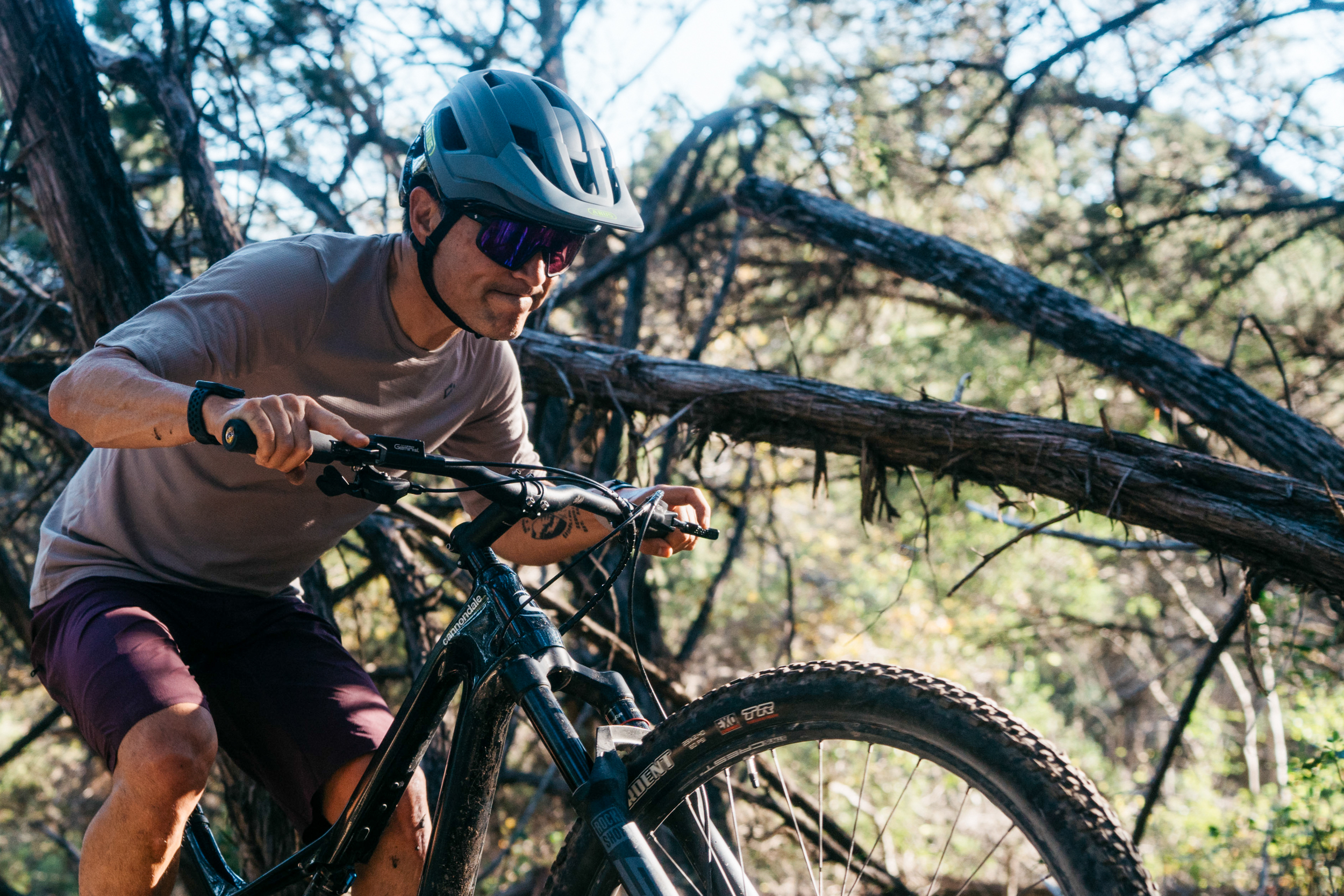
For mountain biking, in particular, frame rigidity can be a concern. The frames should be able to resist potential branches to the face without deforming so much that they lose their protective qualities.
Rimless and semi-rimless frames can be much less structurally stout than those with a full frame unless the rigidity is made up for in the lenses. Some super lightweight glasses have twisted on Ishii’s face during contact with branches to the point of hitting his eyes.
Shape and Design

Cycling sunglasses’ shape and design are dominated by the need to protect the eyes from many angles and at speed. The lenses offer a larger coverage area than in other glasses, both in height and width. The lenses need to be deeper because the cyclist often looks down, and debris shot up by bicycle or car tires comes from this angle.
The lenses and frames also tend to be wider and can be a wrap-around style to better protect the eye during high speed or in cold, fierce headwinds. Wrap-around frames and lenses also protect better against errant branches on the sides of the trail.
The temples must clear the shells, straps, and fit adjustment harnesses on mountain bike helmets and road bike helmets, so they usually sit further away from the head than on other sunglasses, or they may have bends and kinks to route themselves around. The glasses can also sit further from the face and have vents in the lenses to prevent fogging during high-output efforts in cold and humid conditions.
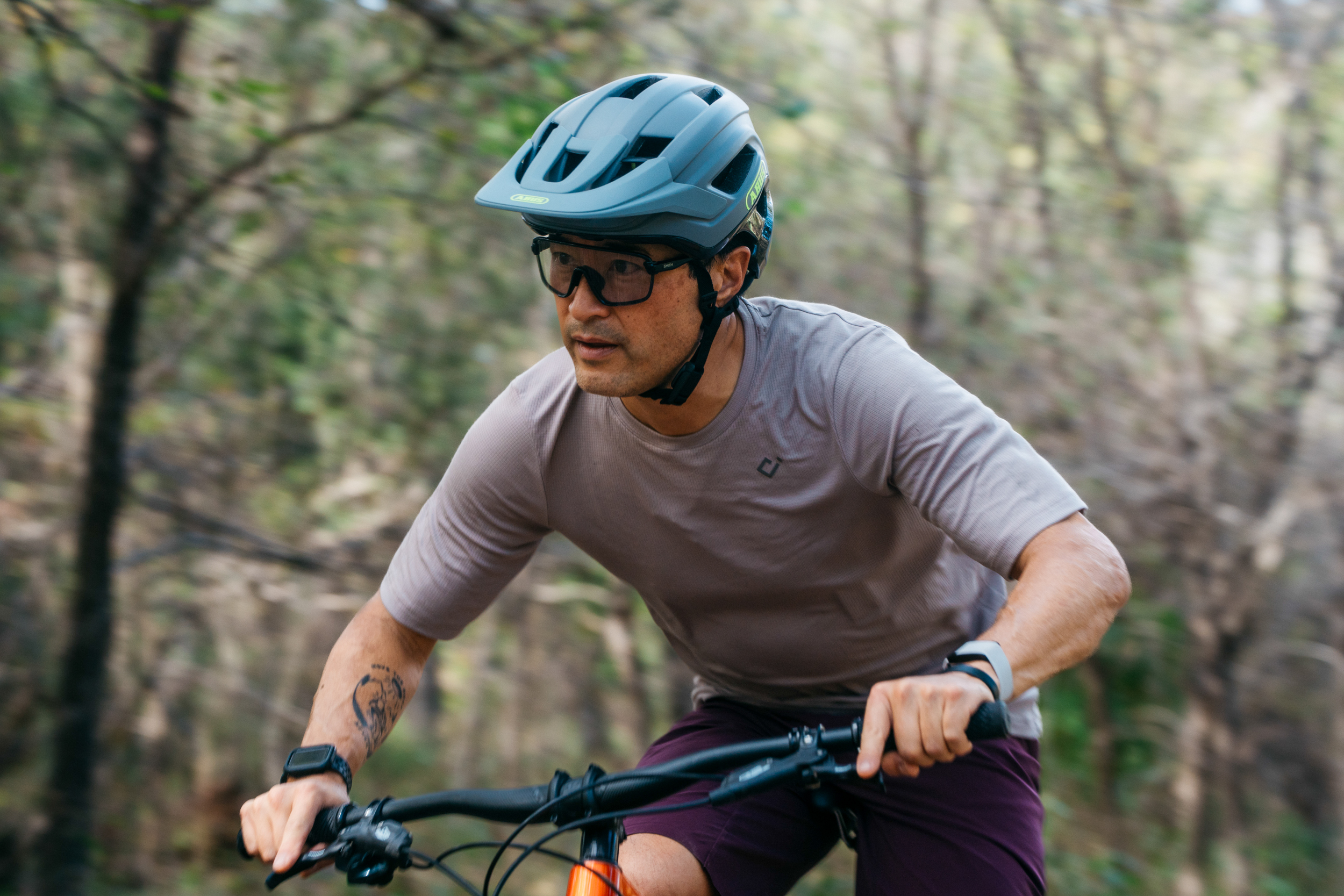
Price & Value
Cycling sunglasses run the gamut as far as pricing. Some are less than $40, while others are $400. We found through the decades that you do get what you pay for. Paying more, to a point, almost always delivers higher-quality optics and a longer usable lifespan. Occasionally, Ishii will don a pair he’s had since the 1990s. They cost more than his monthly rent in the same era. Eye protection was that important to him. Thankfully, you don’t have to drain your bank account for quality eye protection, and there are great options at all price points.
Budget
You can find super cheap shades on Amazon or at the gas station for $20 to $25, which will be better than nothing if that’s all you can afford. At that price point, however, you’re mostly going to find glasses that will scratch easily, probably have some minor distortion, and won’t do much to enhance contrast or color. So, we recommend leveling up to something a bit higher quality like the models on this list from Tifosi.
For $80, both the Tifosi Moab and the Rail Race are a fraction of the price of some of the premium models. They are well made, provide good optical clarity, and they come with 3 lenses — or a Fototec photochromic lens — for use in varying light conditions. The contrast and color enhancement technology isn’t quite on par with glasses from Smith, Oakley, or Roka, but you’d be hard-pressed to notice the difference.

Mid-Tier
If you’re not willing to shell out the big bucks for the premium models, there are plenty of great moderately priced options between $100 and $200. In this price range, you’re finding great coverage and clear optics, but you aren’t paying a premium for certain brand names or the more extensive research and development those brands have put into their lens technologies.
The Optic Nerve FixieMAX is a good example. Ranging from $100 for standard lenses up to $149 for the photochromic lens we tested, these shades provide excellent coverage and clear vision for less than the high-end competition. We found the photochromic lens to work quite well at half the price of the Smith Shift XL MAG. Likewise, the Sweet Protection Memento RIG ($130) provides a great shield for the eyes with great contrast that we found to work well for mixed lighting conditions while mountain biking. They happen to look pretty cool, too.
Premium
To be sure, some of what you’re paying for with the premium brands is the name and funding their marketing budgets, athletes, and event sponsorships. You’re also paying for more advanced lens enhancement technologies and the countless hours that have gone into making lenses that help you see in high definition.
Let’s consider the most expensive option in this guide, the Smith Shift XL MAG, which retails for $305 with the Chromapop Photochromic lens we tested. Not only do these lenses adapt to changing light conditions, but the Chromapop technology really does work to enhance contrast and color, so you can see more detail. Plus, you’ll always be prepared and never need to change lenses.
Similarly, Oakley has been producing some of the highest-quality lenses available for decades. The brand’s Prizm lenses, like those in the Oakley Encoder Strike we tested, are outrageously good. Roka has also put lots of effort into making its lenses the best they possibly can be in models like the Matador Air. In this price range, it’s honestly like splitting hairs trying to differentiate between the optics of the premium options, and you really can’t go wrong if you’ve got the money to spend.
Frequently Asked Questions
The best sunglasses for cycling will protect the eyes from flying debris, dust, and wind while filtering out the appropriate amount of light and delivering enough contrast for the riding conditions. They will have a secure enough fit to maintain their protective position while mountain biking in rough terrain but remain comfortable enough for long hours in the saddle. The best cycling sunglasses are also durable. They are able to take a hit from an errant branch and still secure lenses after hundreds of lens swaps.
Cycling sunglasses must have a larger lens coverage area to protect the eyes from wind generated by riding and the weather. They must also offer extended protection compared to other sunglasses against debris thrown up by a bike or car tire in front of the rider or a branch on the side of the trail. The lenses must be shatterproof, and the frames must withstand the aforementioned impacts.
The cycling sunglasses must stay put regardless of terrain ridden or the amount of sweat pouring off the head. Finally, the sunglasses must clear fog on cold and humid days and be compatible with helmet retention straps.
The cycling sunglasses that a professional cyclist wears are usually mandated by team or individual sponsor obligations.
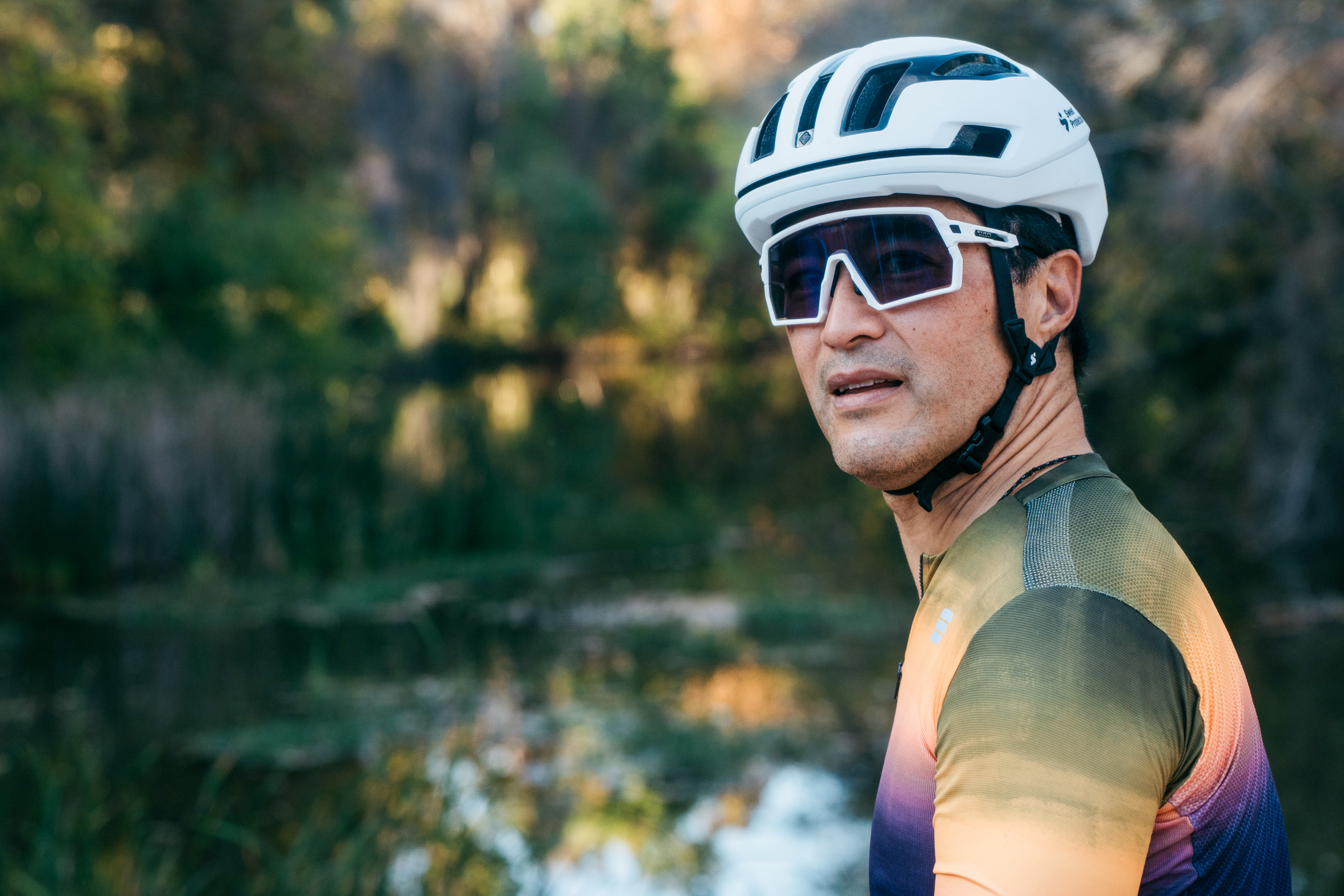
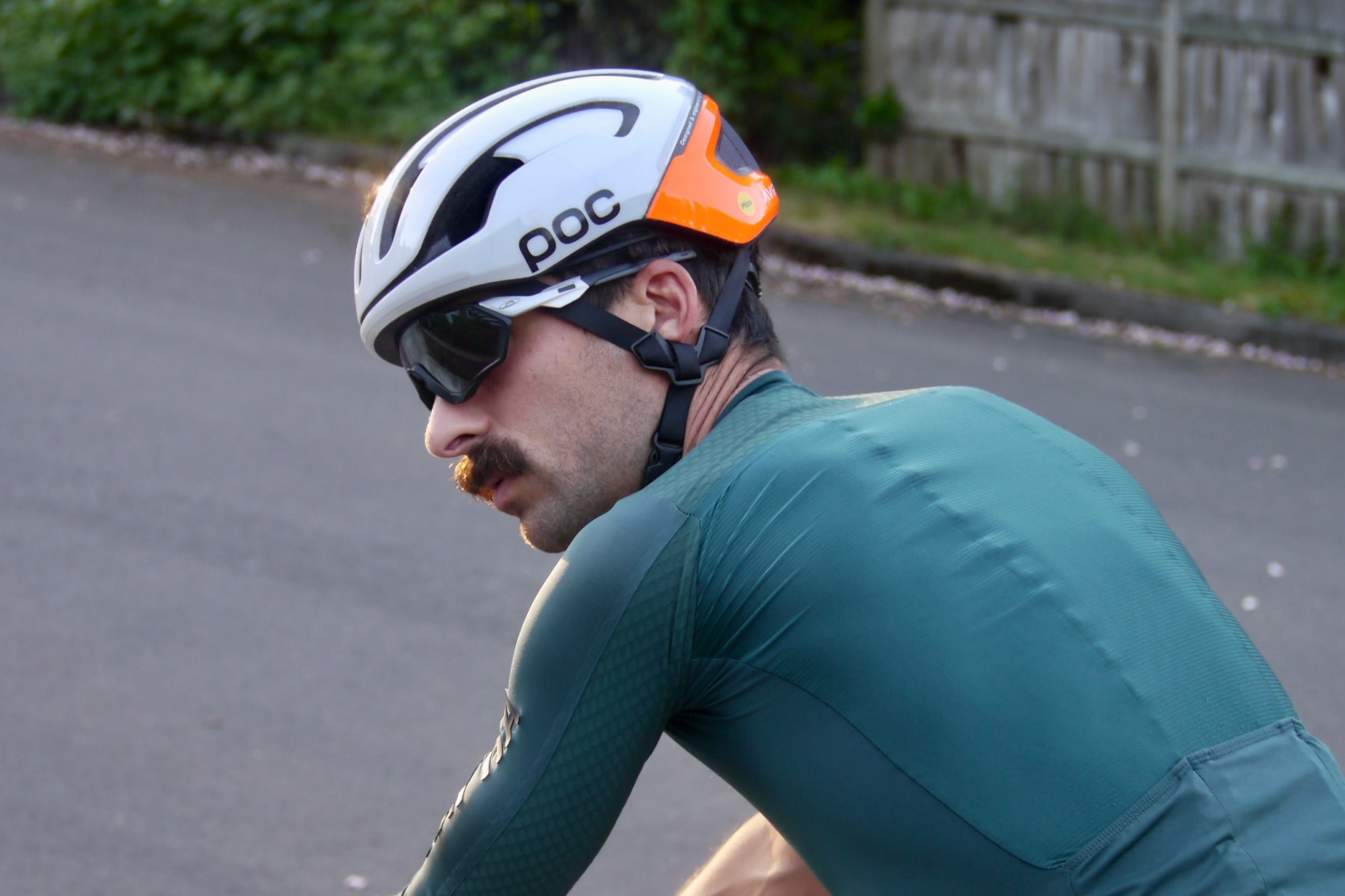
The Best Road Bike Helmets of 2025-2026
We tested 16 models from top brands, including Giro, Specialized, Lazer, and more, to find the best road bike helmets.
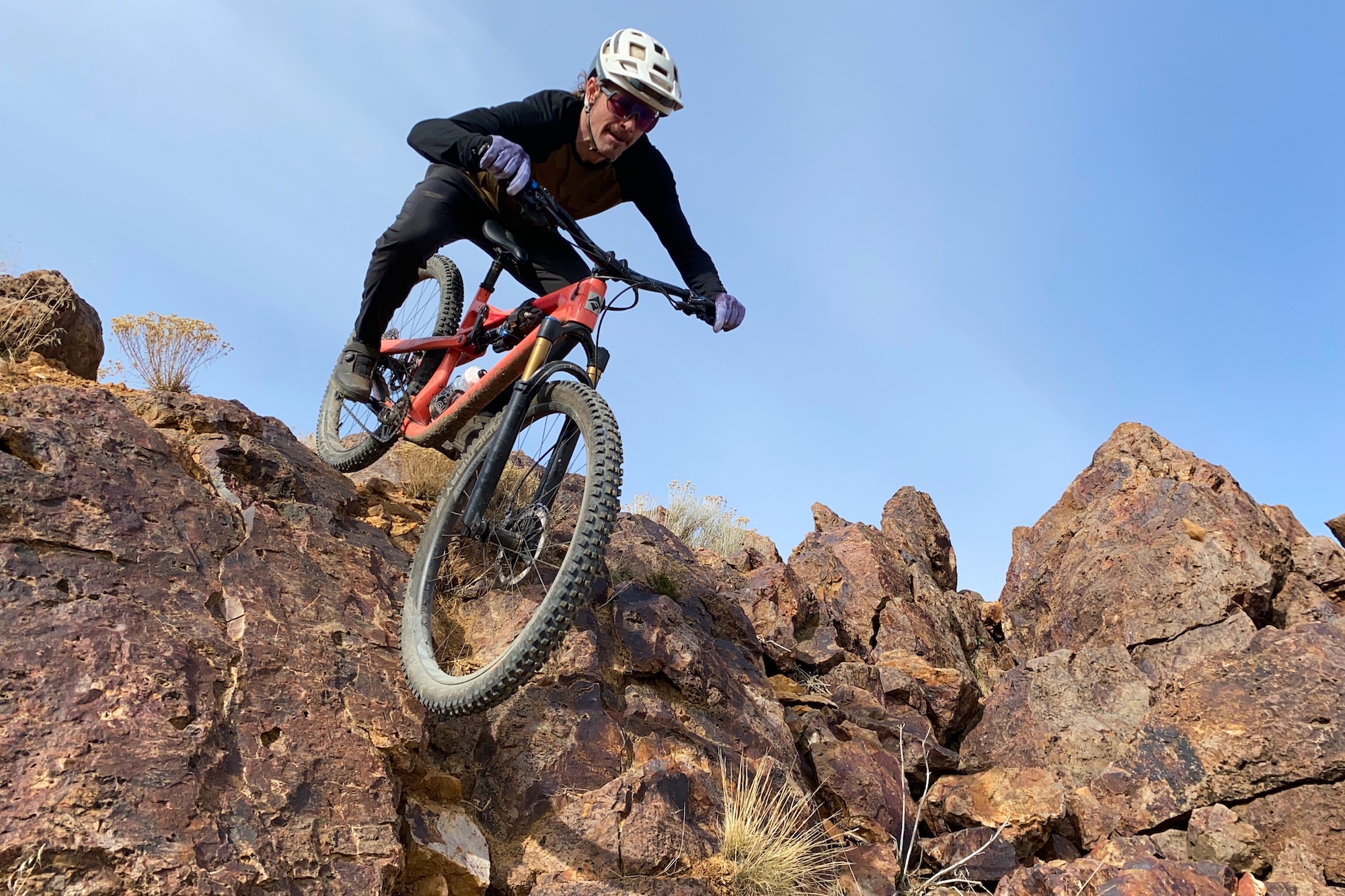
The Best Mountain Bike Helmets of 2025
We tested the top models from Giro, Specialized, POC, Smith, and more to help you find the best mountain bike helmet for your next ride.

